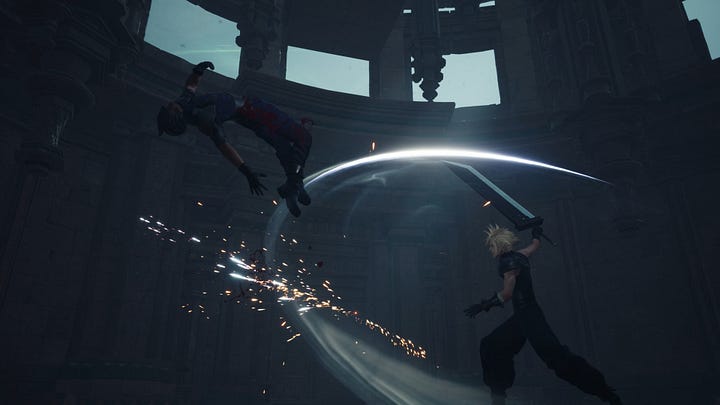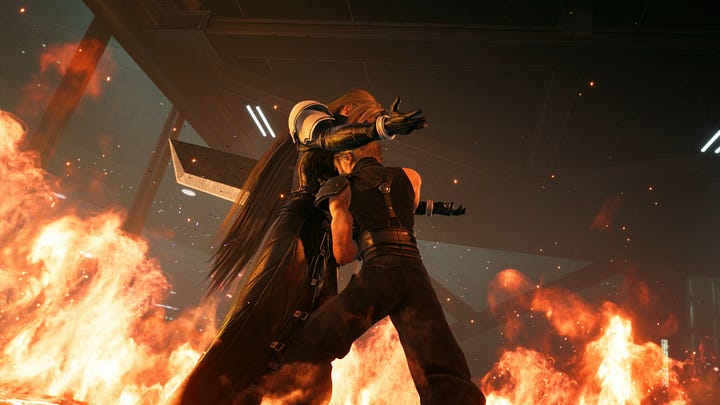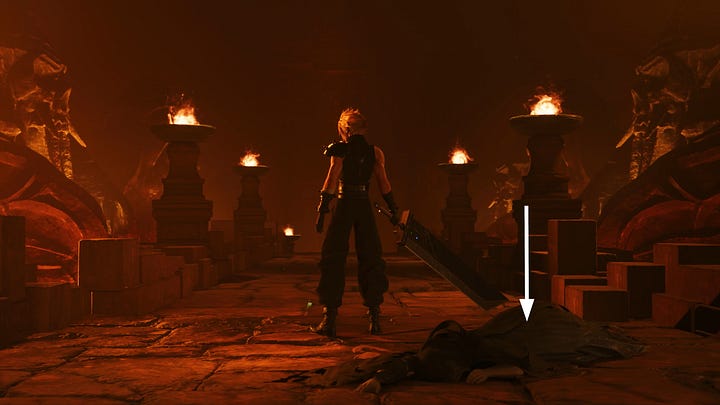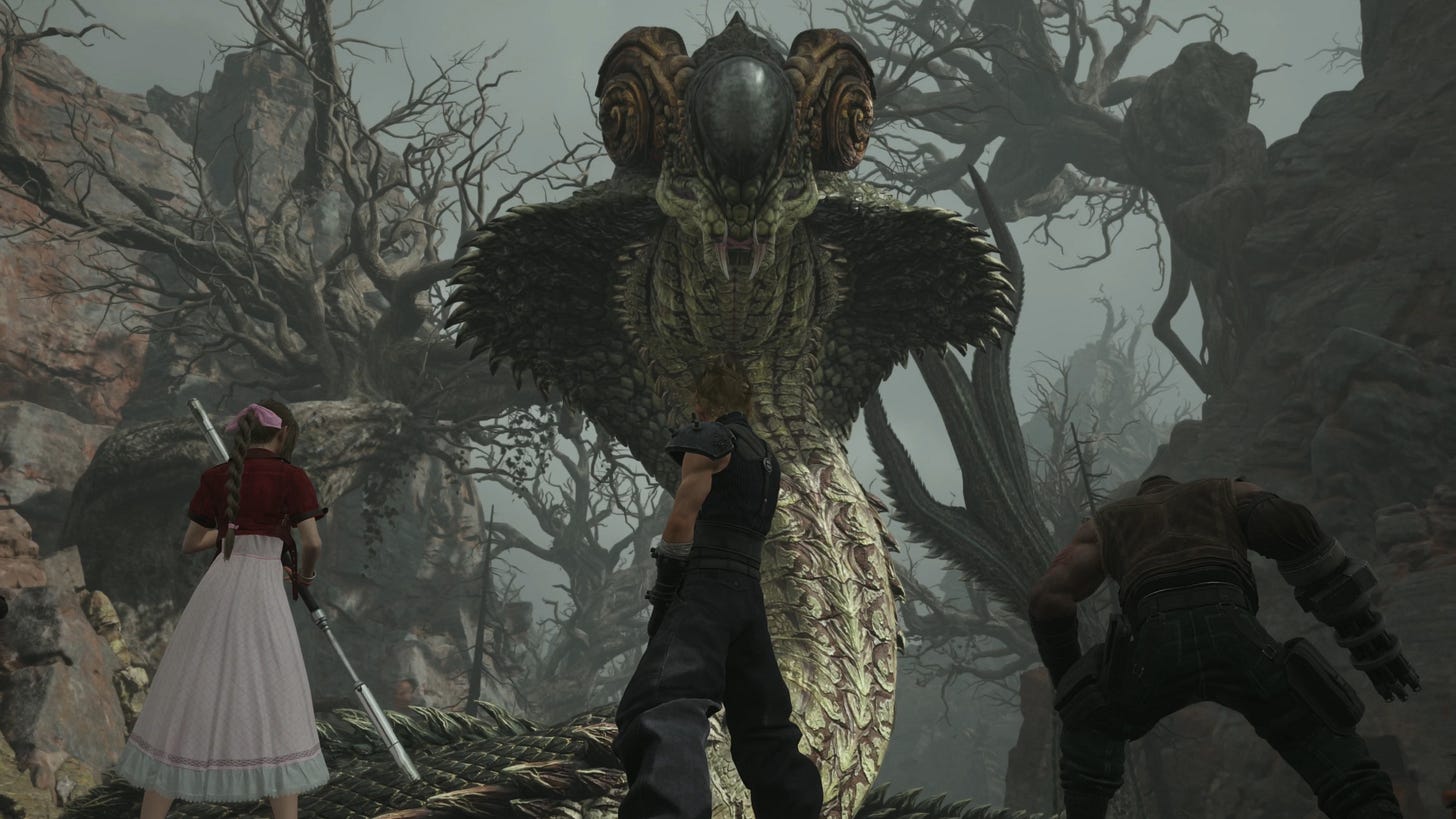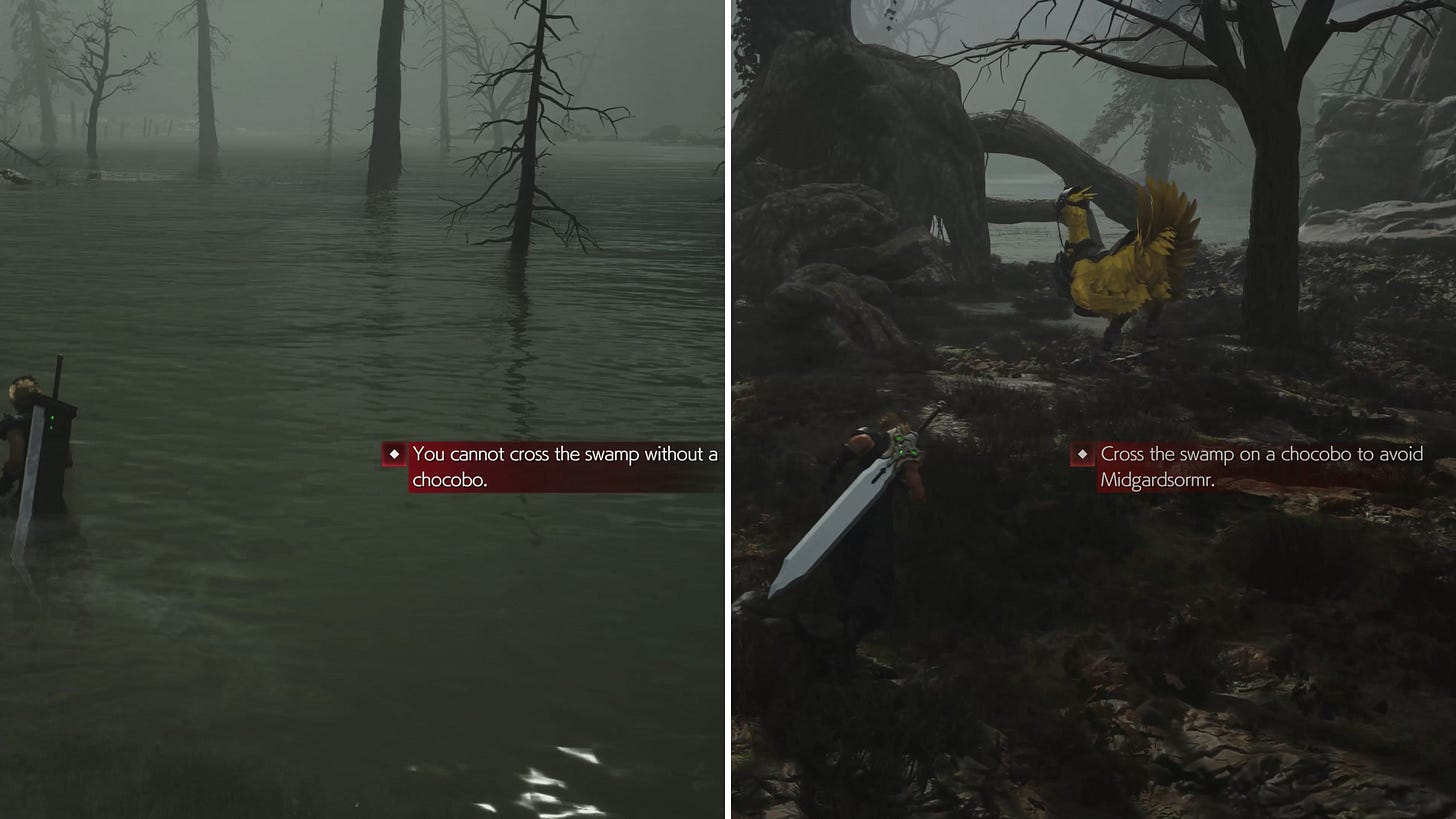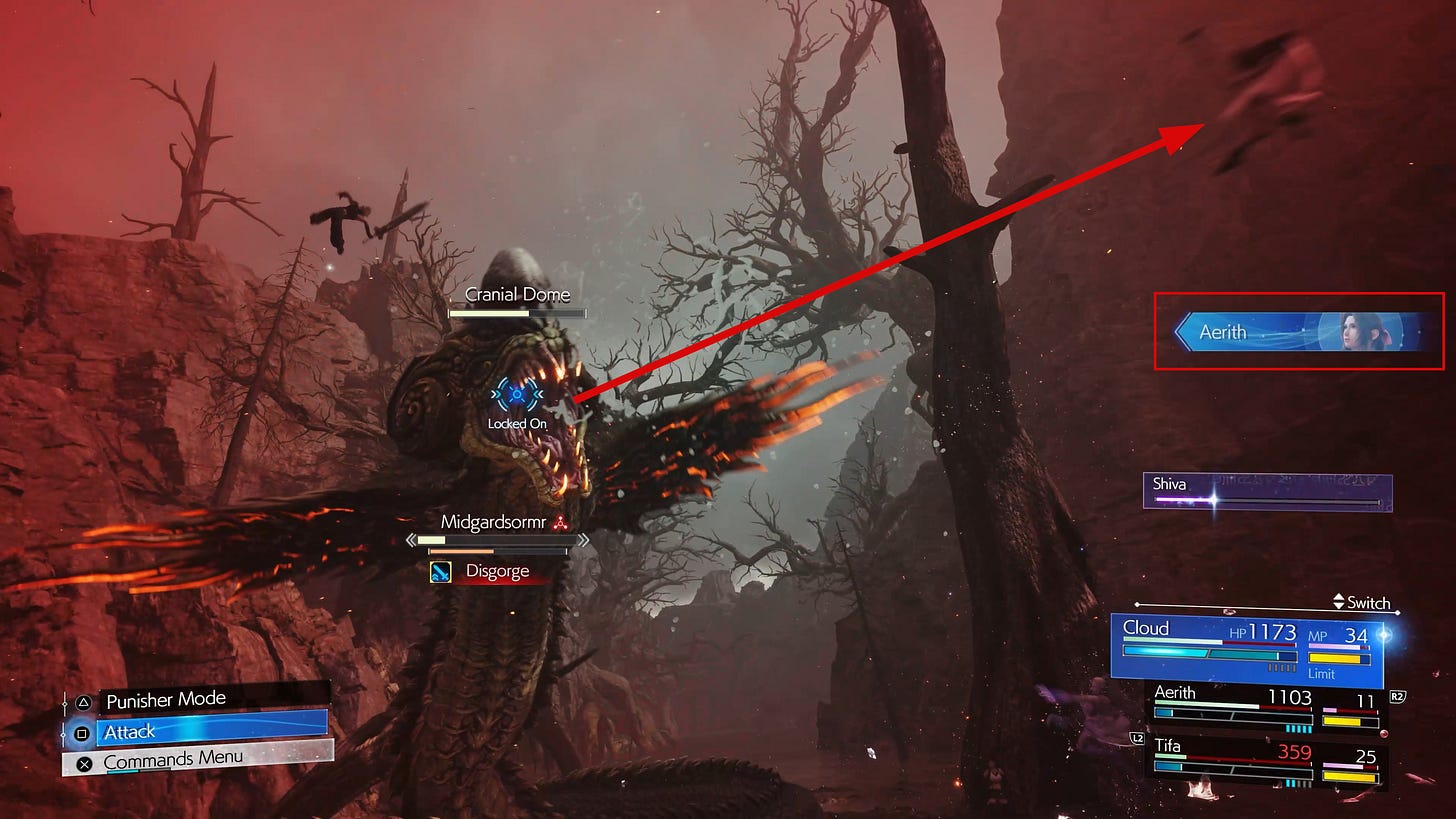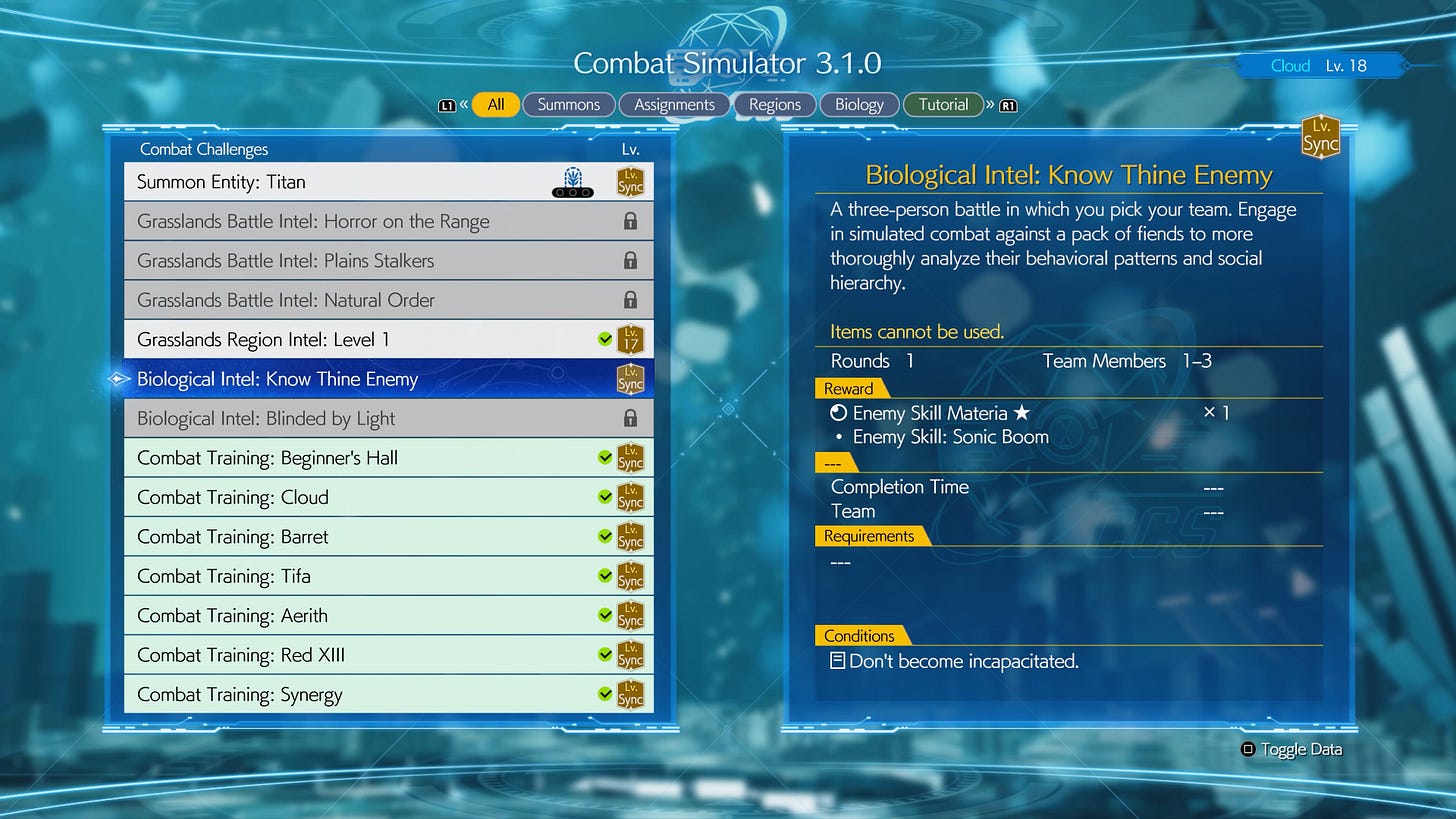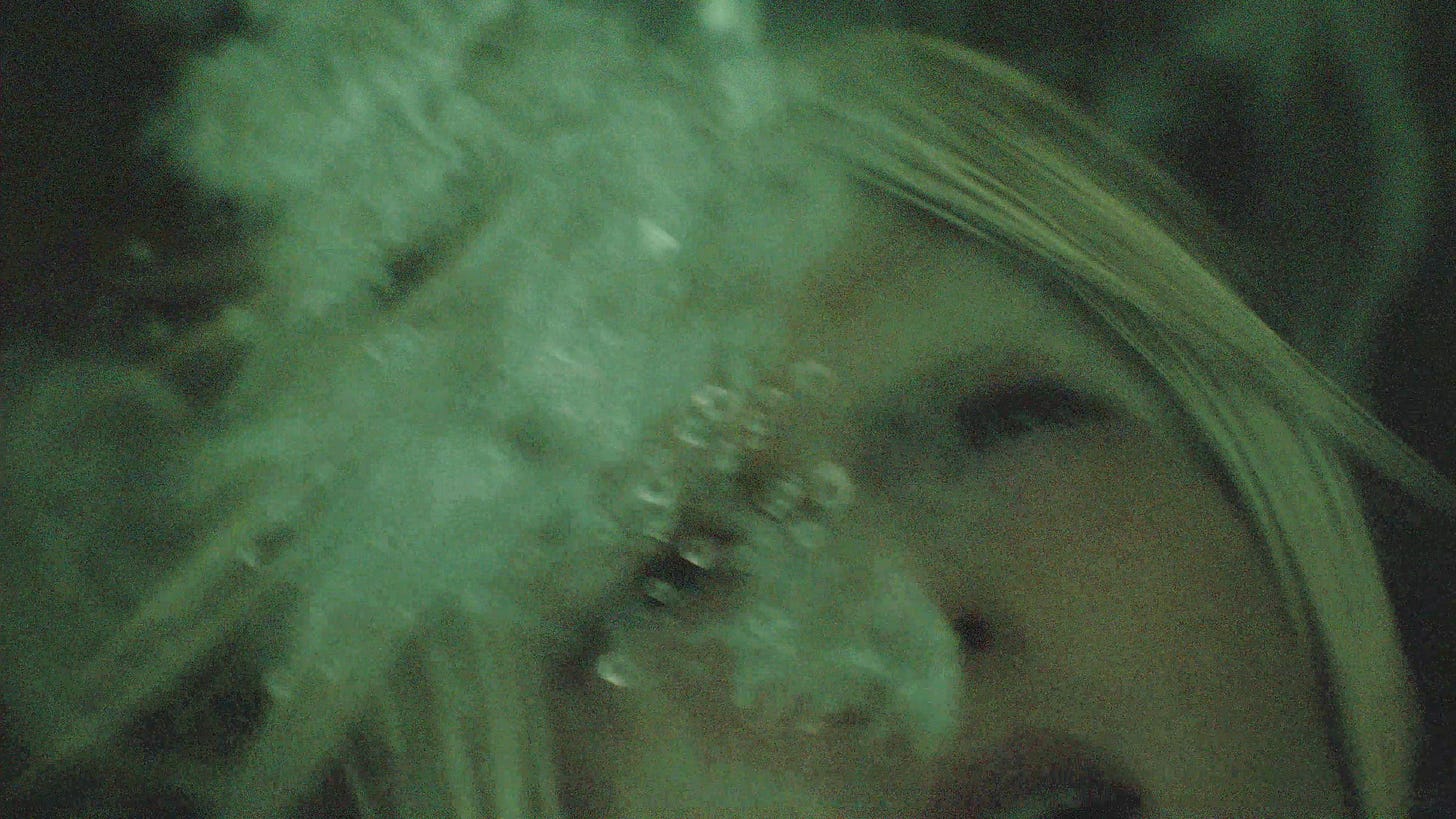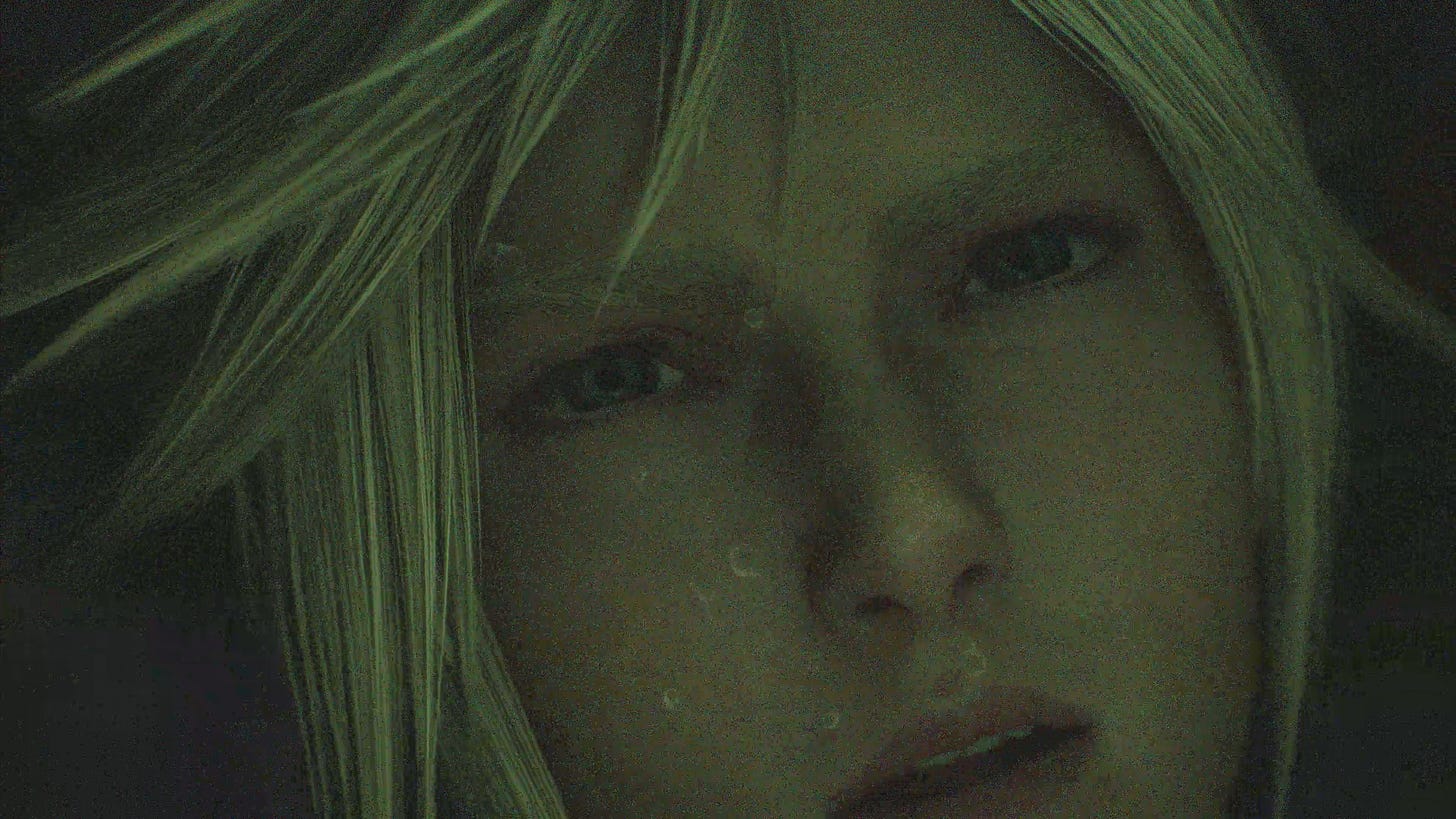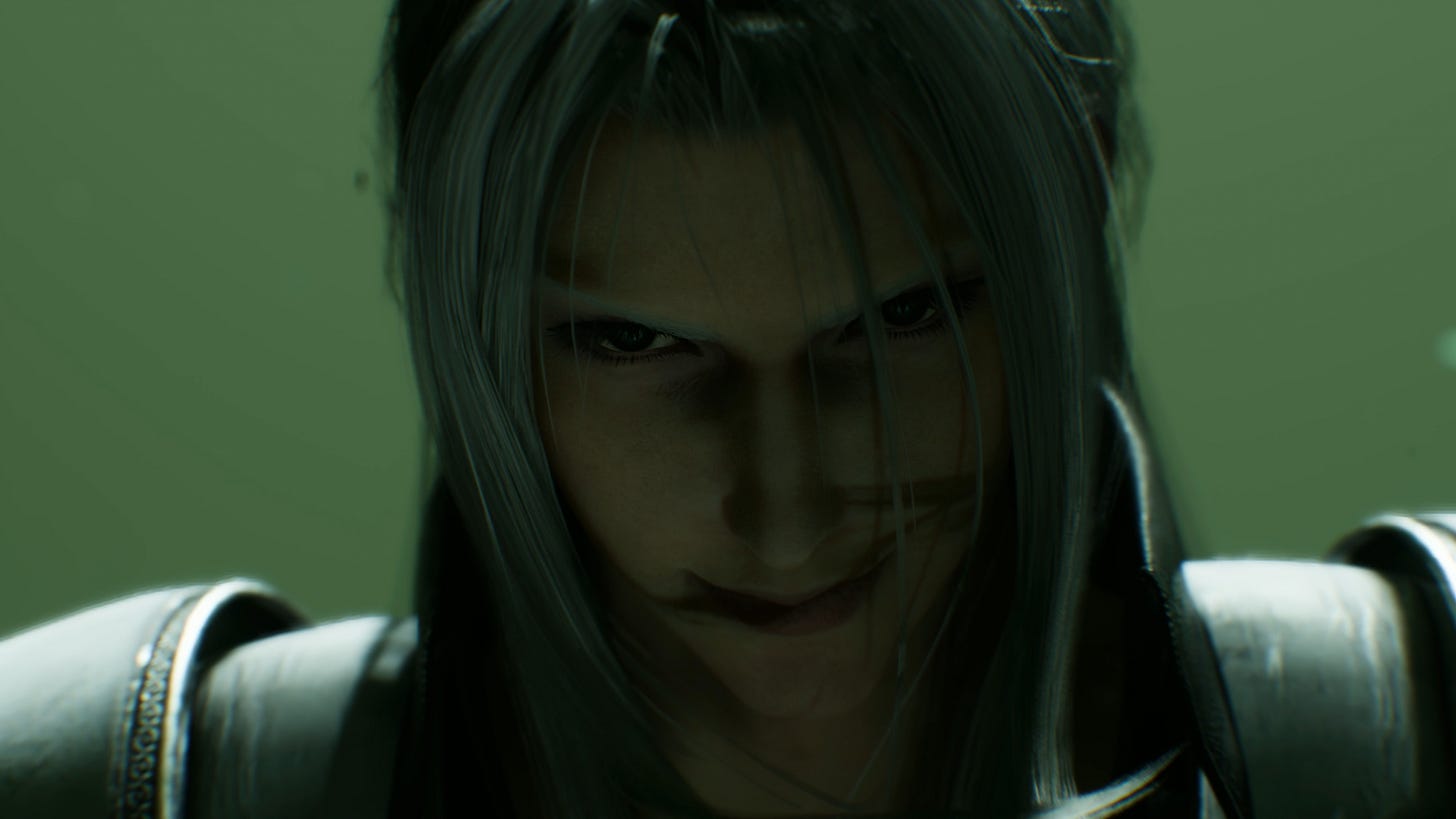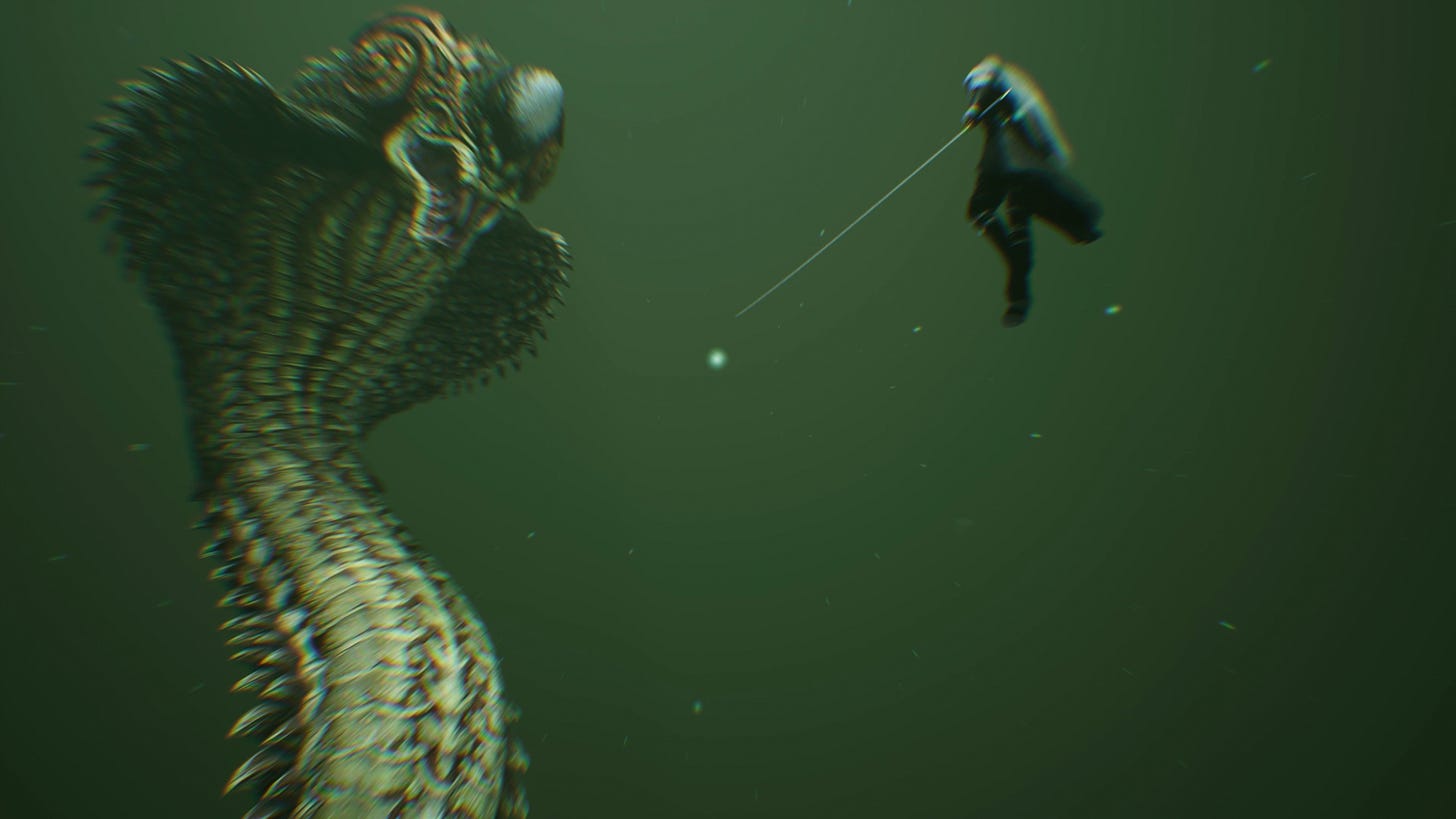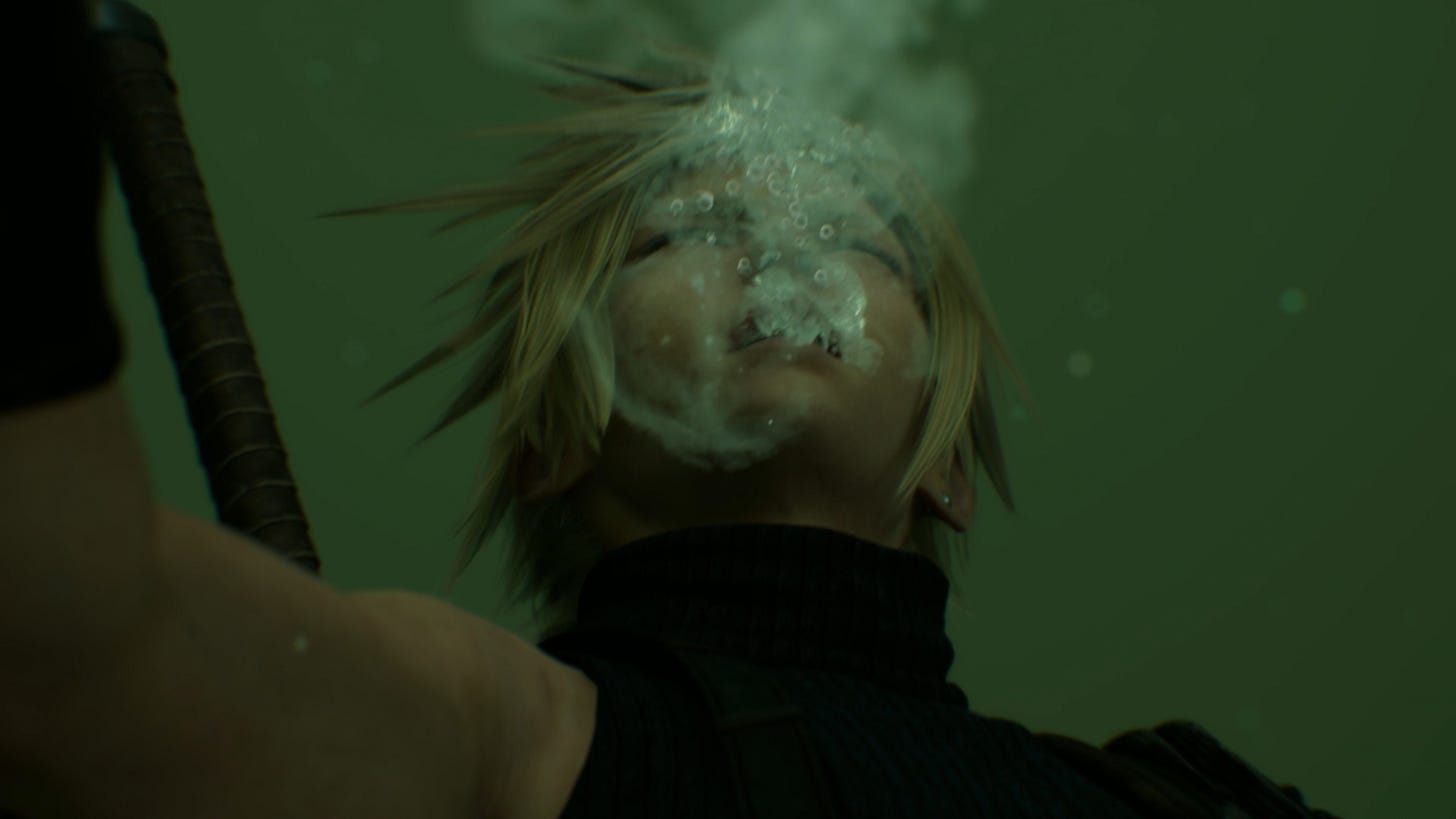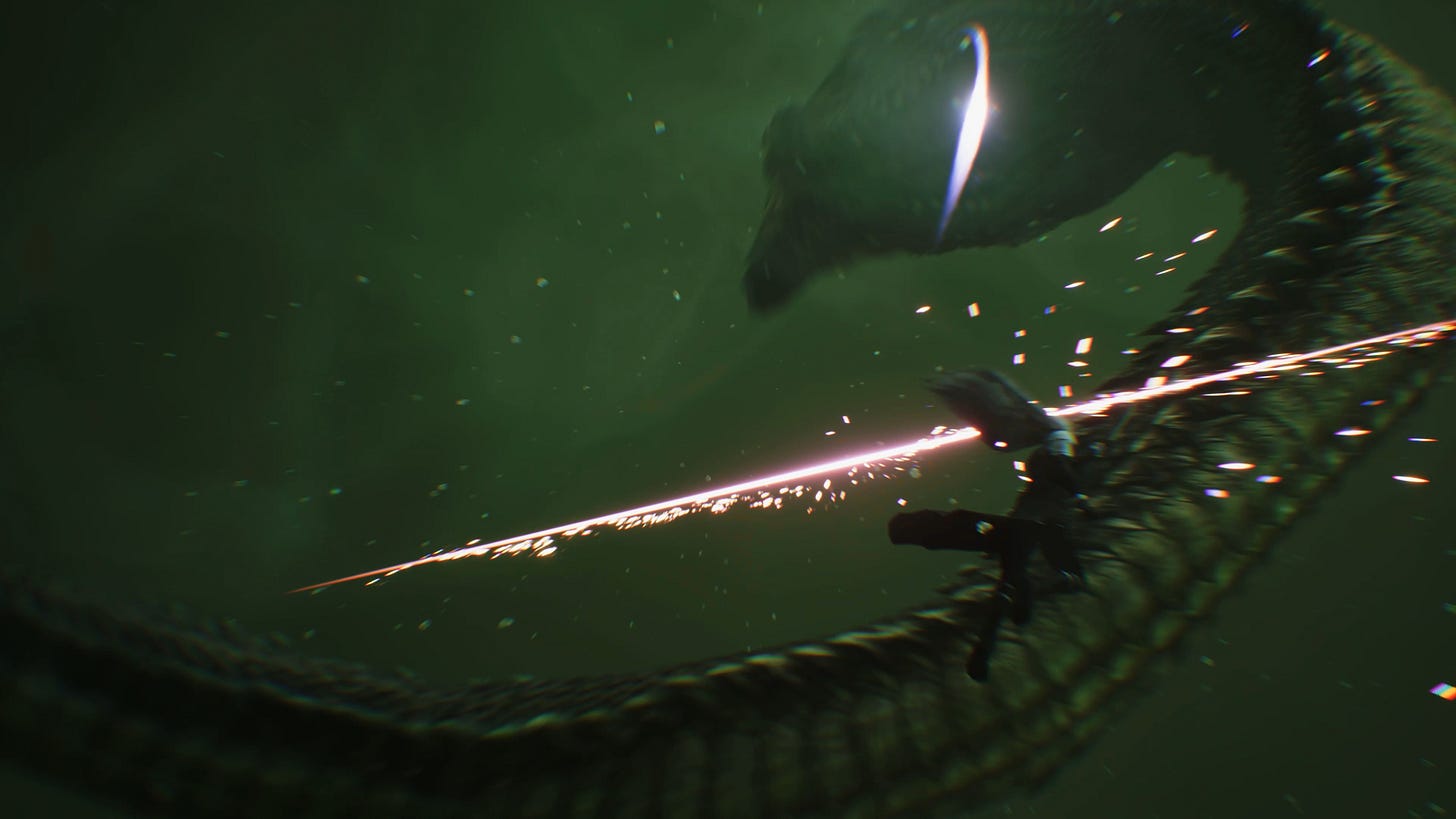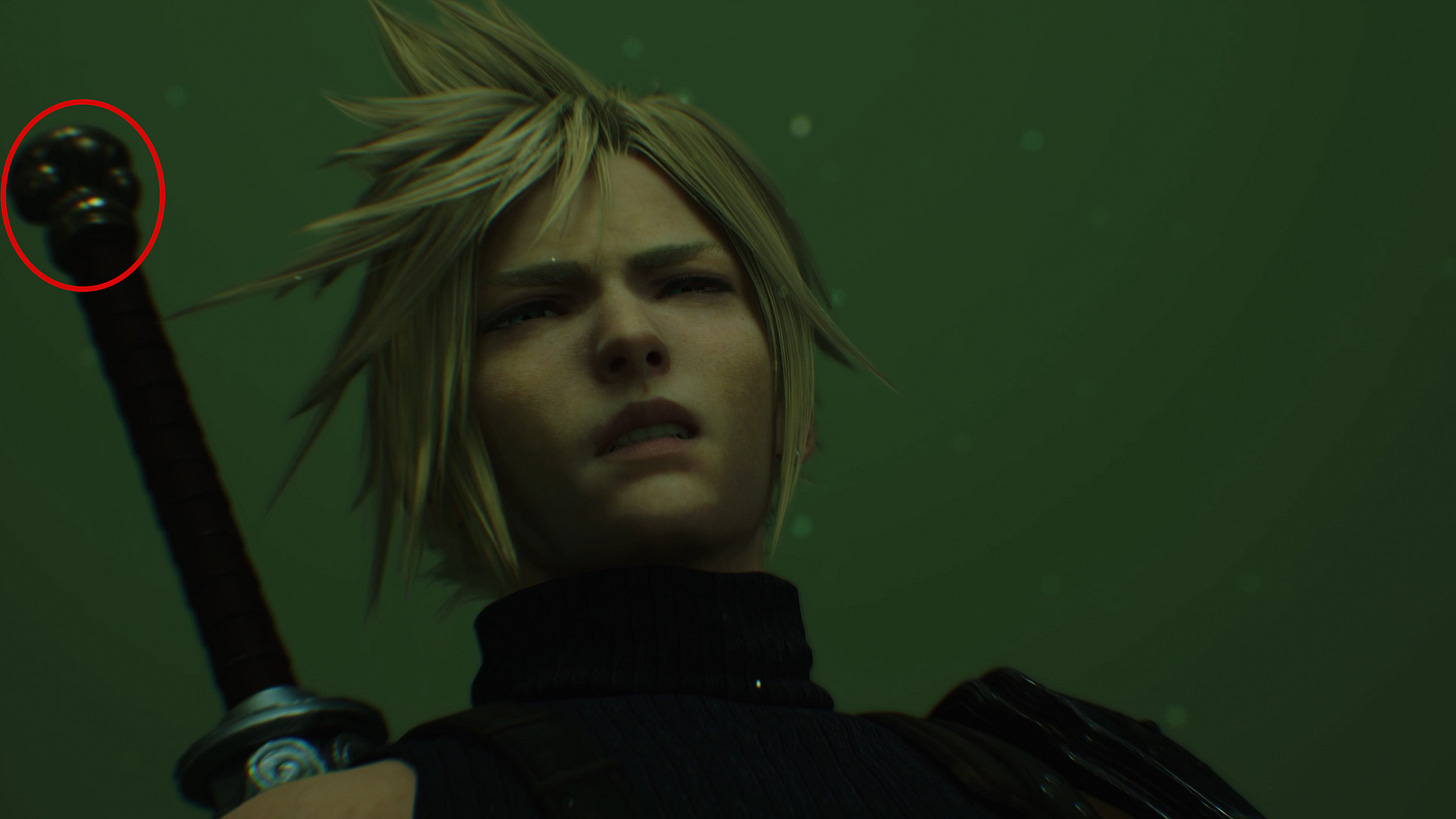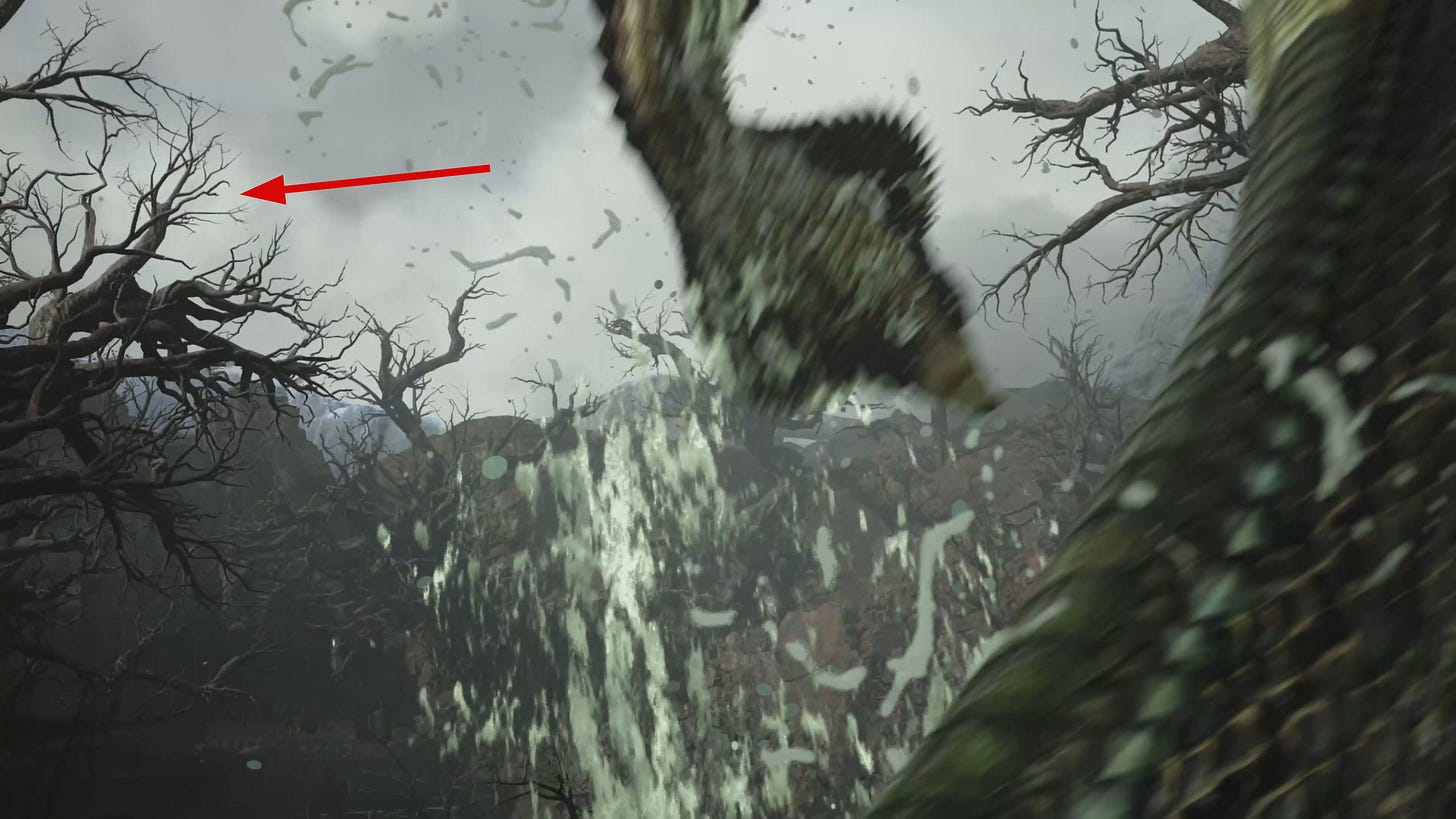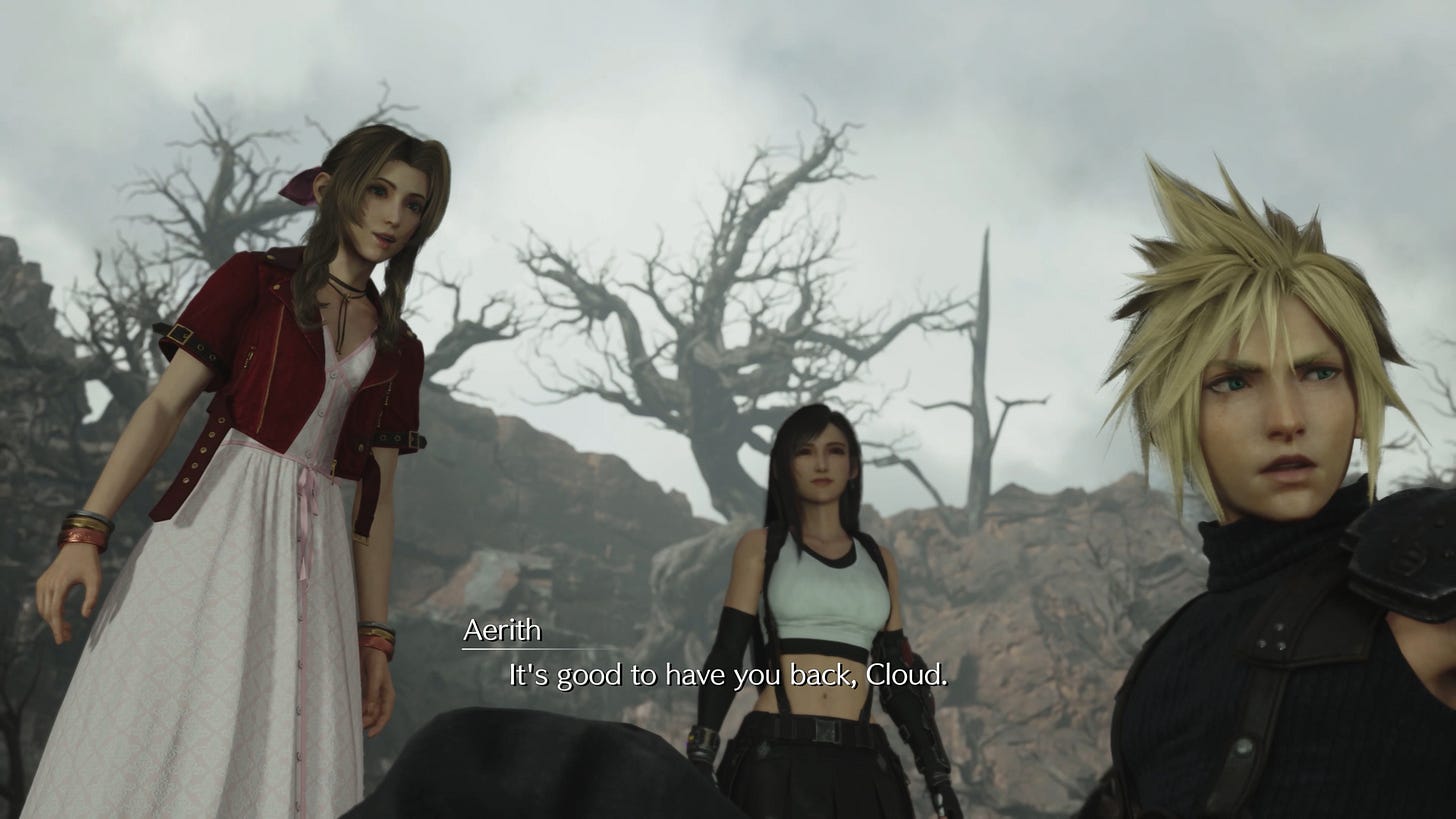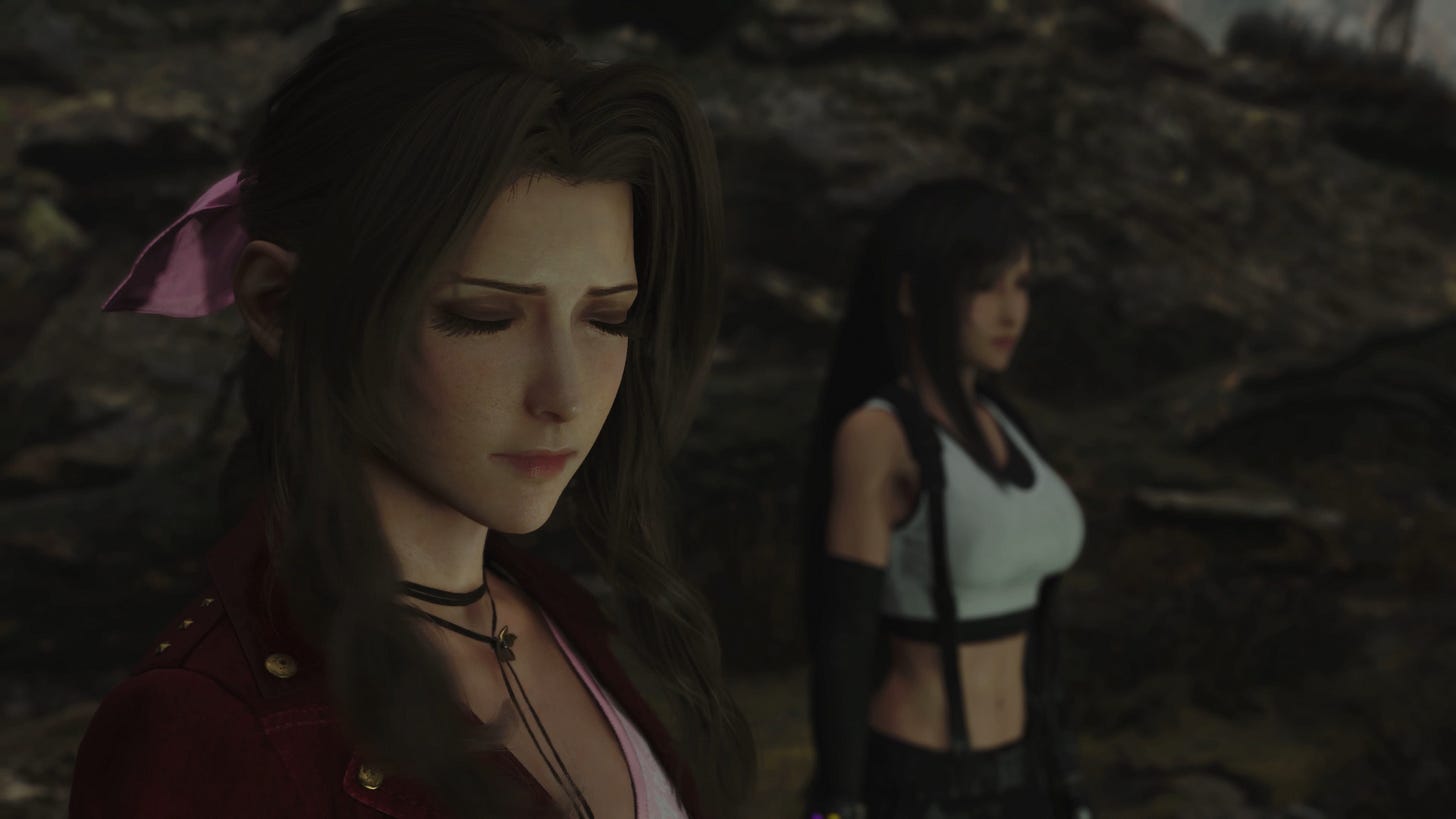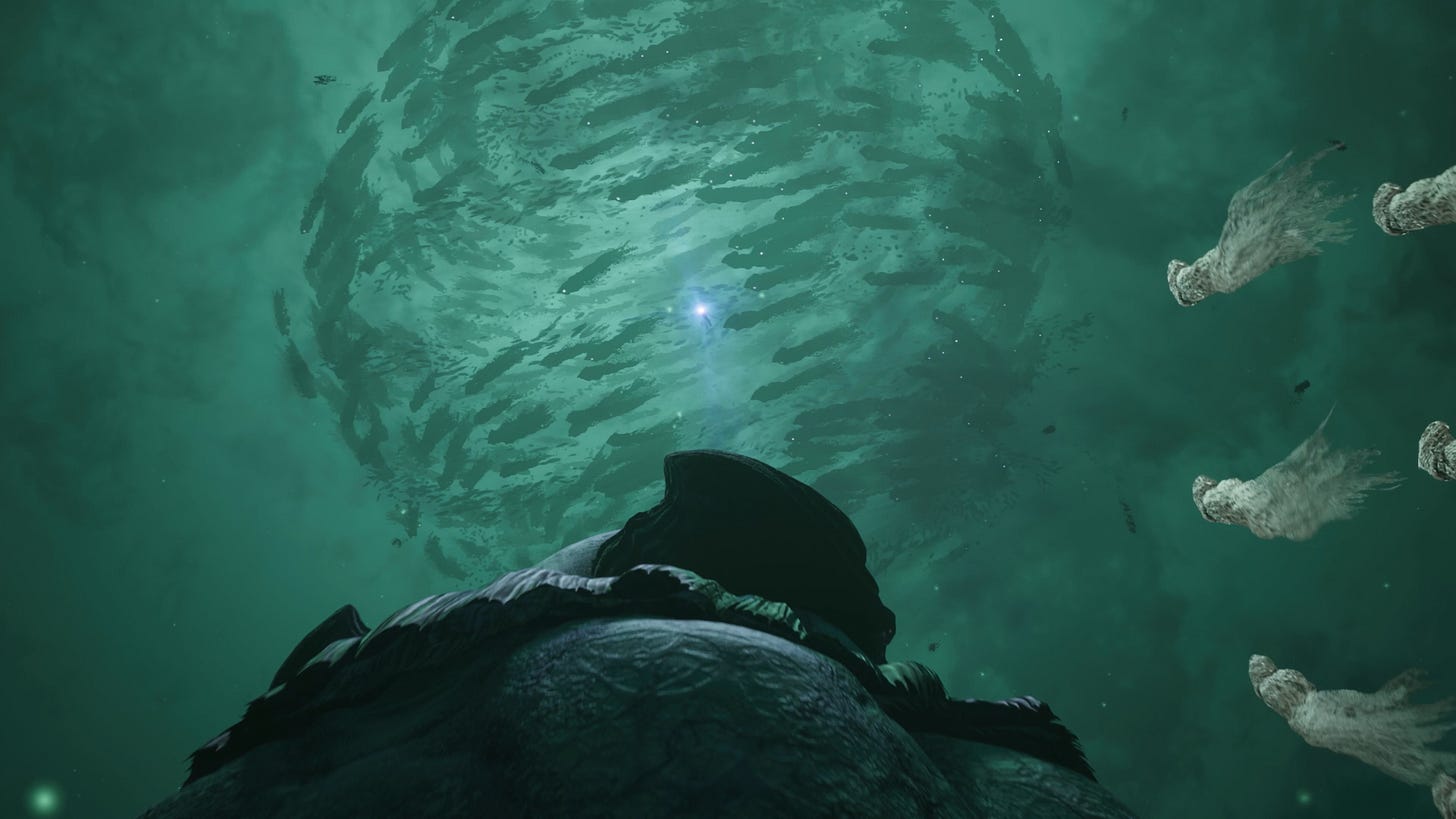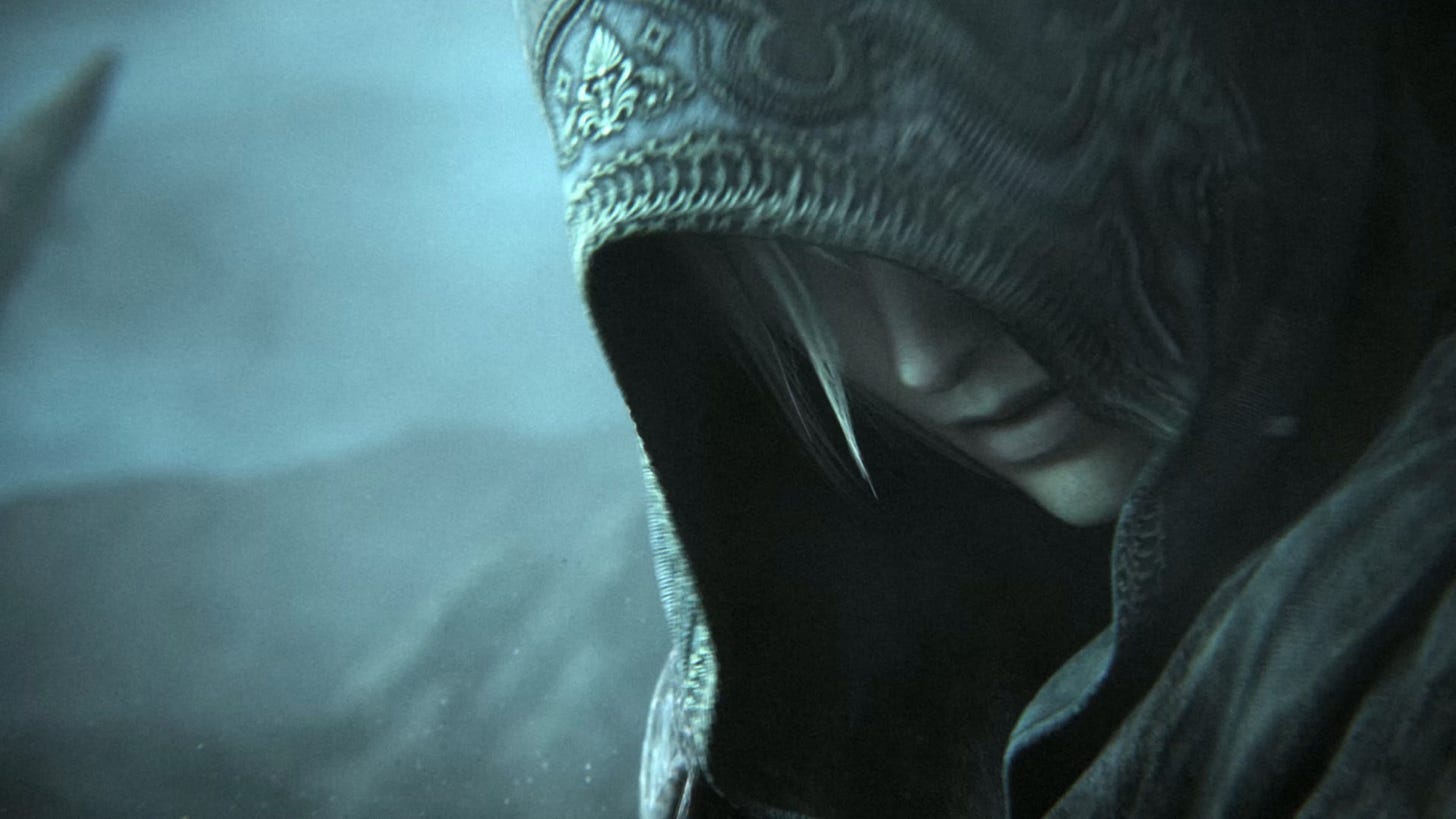Did Sephiroth Really Do This? | Making Sense of FFVII Rebirth - Part 4 | GA#35
After defeating the Midgardsormr at the end of chapter 2, contrary to the original game, we actually witness the gigantic serpent being impaled. Why? Something's different this time around.
Table of Contents
A Black Cloud with Silver Linings
Introduction
Greetings fellow Scholars of the Lifestream!
We’re back with another analysis in our Making Sense of Final Fantasy VII Rebirth article series. It’s a shorter one1 this time but chunky enough to warrant its own article instead of being relegated to an honorable mention in one of the others.
Many parts in Rebirth differ substantially or even greatly in detail when compared to the original work. The locations are vastly expanded upon, additional sub-events, mini-games, and characters are inserted, many events and scenes re-contextualized and molded into a different experience while still honoring the original blueprint.
The end of chapter 2 is no different, albeit less grandiose compared to, say, the Queen’s Blood tournament on the cargo turned passenger ferry from Junon to Costa del Sol.
What am I talking about?
The battle against the Beta-casting and character-ejecting early-game serpentine “super boss” called Midgar Zolom. Or rather Midgardsormr, now properly spelled like its Norse mythological counterpart.2 Not quite world-encircling but large enough to warrant being called like that.
So, without further ado, let’s get into it.
Differences to the Original
In essence, the sequence of events around Midgardsormr compares well to the original version. We meet Chocobo Bill on his farm, get taught by his grandson how to capture a Chocobo, and are then able to ride that Chocobo across the swamp in order to avoid the giant, scary snake… OK, that last part is not possible in Rebirth, where the battle against the bone-headed3 serpent is unavoidable. Rebirth’s progression logic also does not allow us to cross the swamp on foot without a Chocobo as long as Midgardsormr is still alive.
While crossing the swamp all the way to the other side is also not meant to be doable in the original game, it is nonetheless possible by two means:
Either you grind enough character and Materia levels and beat the crap out of this towering obstacle and/or make effective preparations and use smart tactics—and naturally learn the strong Enemy Skill Beta along the way, the main reason why you’d want to fight and defeat this monstrosity in the first place,
Or you outsmart its movement “AI” and book it by foot, which is the way to go during speedruns.4
But the average player generally doesn’t know how to achieve any of this, so a Chocobo is the way to go. For the sake of completion, let’s go through the steps required to cross the swamp properly as intended.
How to Catch an Original Chocobo
When you reach the Chocobo Farm—either directly or after realizing the serpentine guardian of the swamp won’t let you pass—Chocobo Bill tells you that you need one of the yellow feathered friend to outrun the Midgar Zolom.
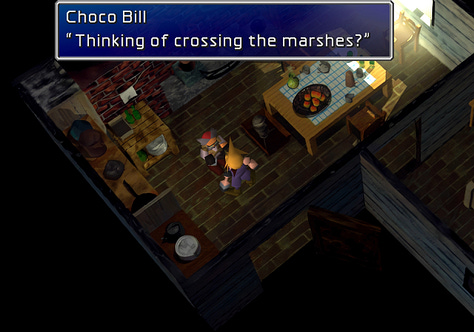

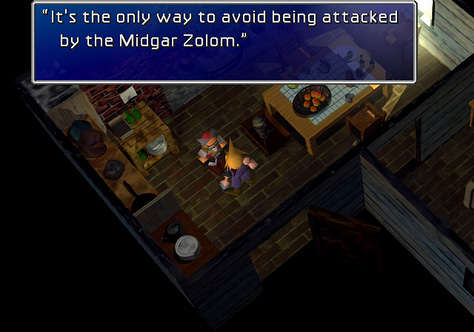
Billy, his grandson then teaches you how to catch one and sells you the Chocobo Lure Materia for 2000 gil which is required to potentially cause a Chocobo appear in a random battle triggered while running around on Chocobo tracks on the overworld.
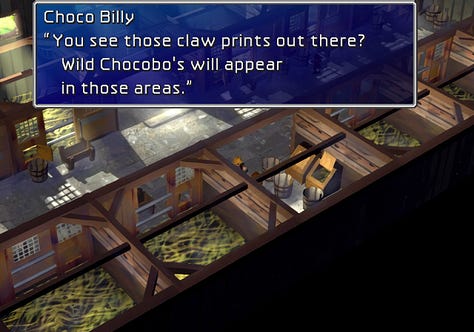
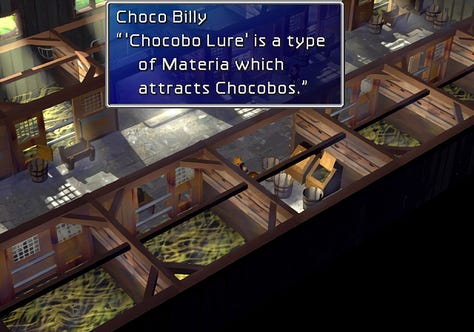
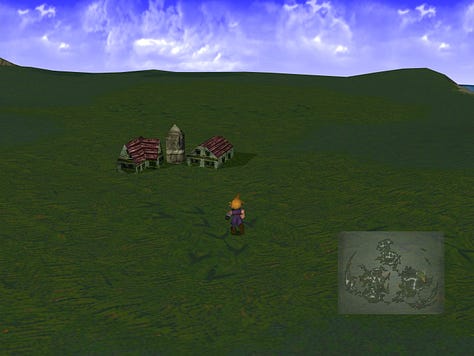
In addition to that, you also need “greens” to keep the Chocobo occupied while you defeat the enemies around it. Those can be purchased from him directly. The more expensive the longer it keeps the Chocobo busy feasting on it.
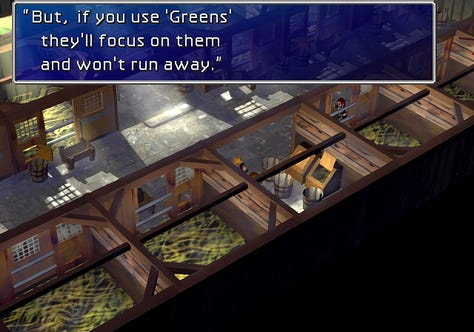
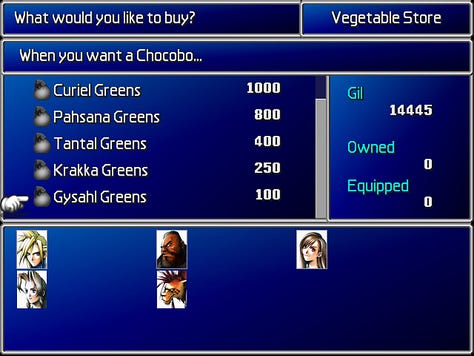

After catching a Chocobo this way, you automatically mount it on the overworld and are now able to outrun the sizable swamp stalker to reach the other side and thus the Mythril Mines.
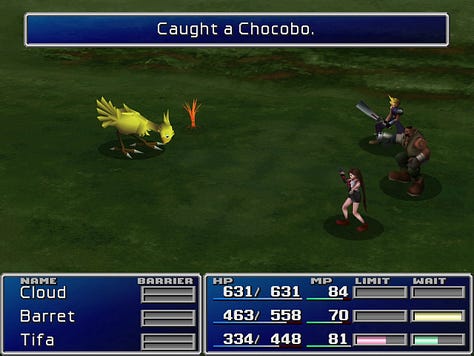
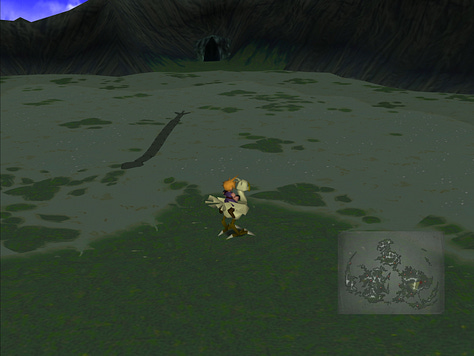
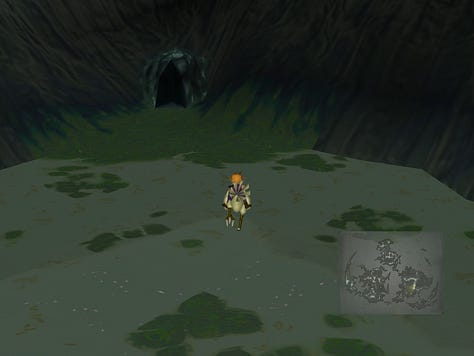
How to Catch a Reborn Chocobo
Compared to the above chain of events, Rebirth’s version is much more streamlined. In the original game, you don’t have to try and cross the marshes first before realizing that the Midgar Zolom won’t let you pass and instead overpower you. If you know what must be done or happen to enter the Chocobo Farm first, you optionally listen to the instructions before buying the Chocobo Lure Materia to catch yourself a big bird and cross the marshes unharmed.
In Rebirth, however, before you can even enter the Chocobo farm, you first have to walk south and visit the abandoned dock where you learn about the discontinued Republican ferry system and the biggest threat in the swamp, the Midgardsormr. This then points you towards the Chocobo Farm where you can rent a bird to cross the swamp safely.

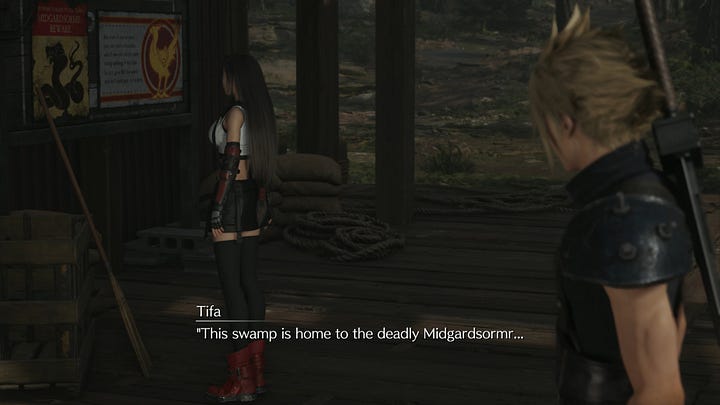
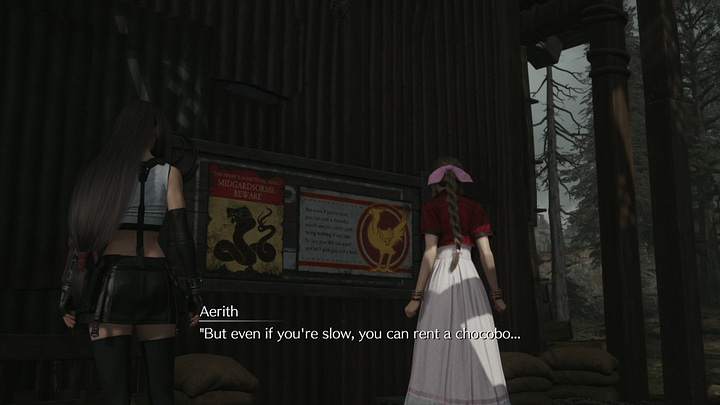
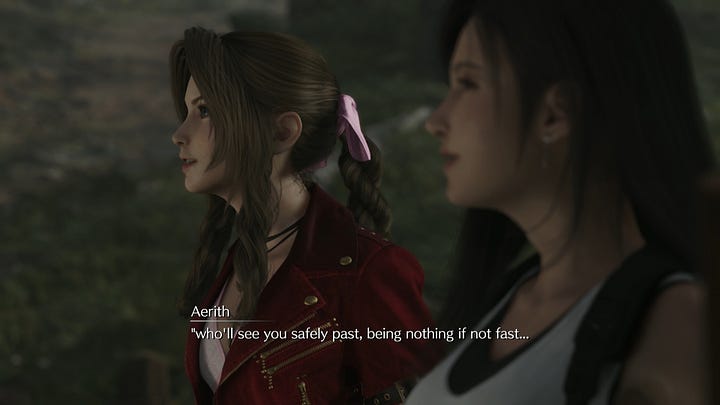
The only optional steps you can take before visiting said abandoned dock merely encompass certain people leading you on the right track.
Visiting Oliver’s farm and talking to the main farmer completes the Coconspirator discovery quest and tells you that the swamp is the best place to hole up and hide form Shinra.

If you walk up to Chocobo Bill who’s dealing with a broken-down vehicle at an intersection somewhat close to the Chocobo Farm, he’ll tell you that the abandoned dock is the best place to hunker down in peace.

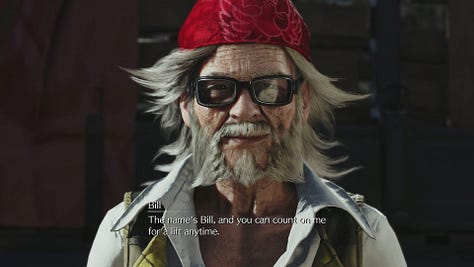
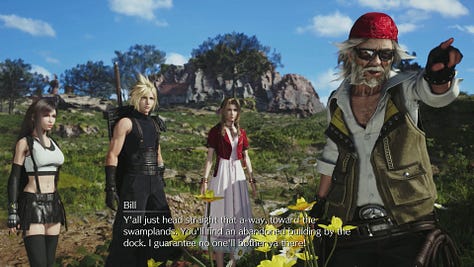
After your mandatory visit to the abandoned dock at the swamp, Rebirth’s chain of events become very similar to its original counterpart.
You visit the Chocobo farm, talk to Chocobo Bill who repeats the Chocobos’ ability to cross the swamp and outrun the Midgardsormr you already learned about from his amusing advertisement at the docks.
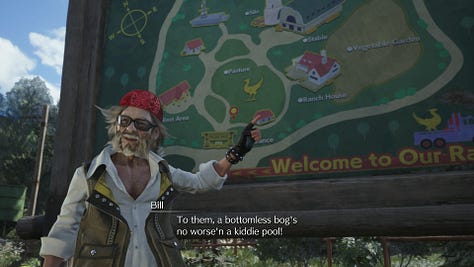
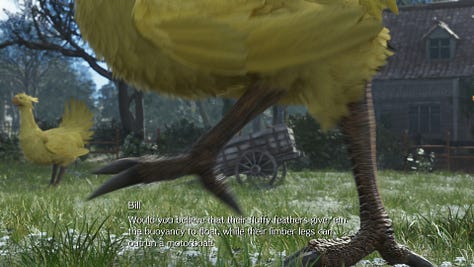
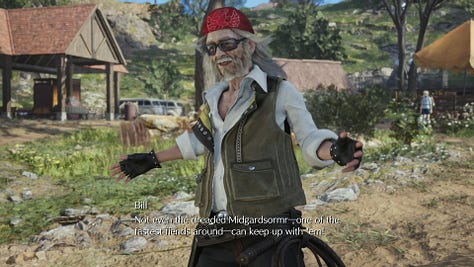
You will then be sent to the barn where his grandson Billy tells you how to catch a Chocobo since al of their rentals are already spoken for. While this segment is generally the same, it contains two key differences. Firstly, you don’t need a Chocobo Lure Materia anymore and secondly, you will receive the Gysahl Greens from his sister Chloe’s shop instead. You also cannot choose to buy any other greens and receive them automatically.
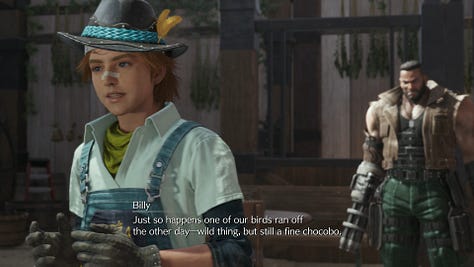
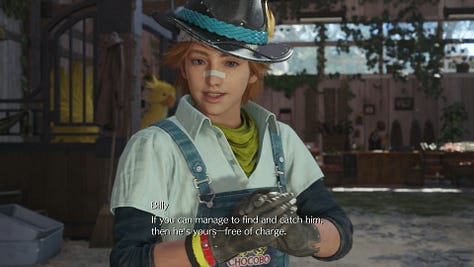

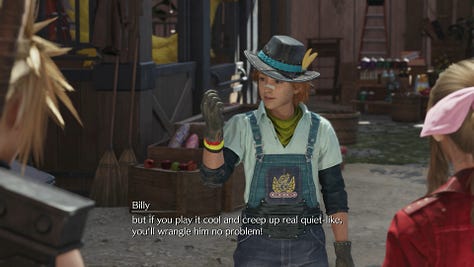
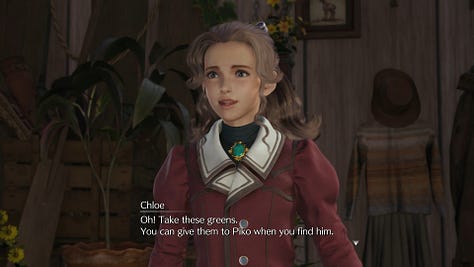
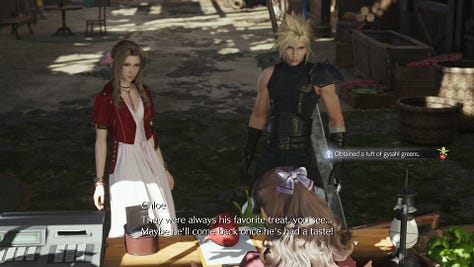
After leaving the farm, you simply follow the path with the Chocobo tracks to where Piko, the runaway Chocobo is currently chilling out. Again, the general sentiment of this section remains the same, but the details differ. Instead of having to get into a battle while moving along Chocobo tracks and then keep the Chocobo busy with eating greens while you dispatch the enemies around it, you need to sneak up to Piko and wrangle him without any of the Chocobos noticing you. After achieving this, the good boy is treated with his favorite food, the Gysahl Greens, which is basically an oversized Raddish.


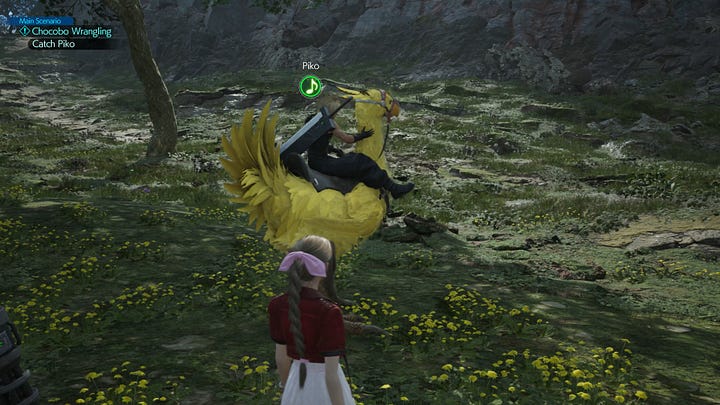
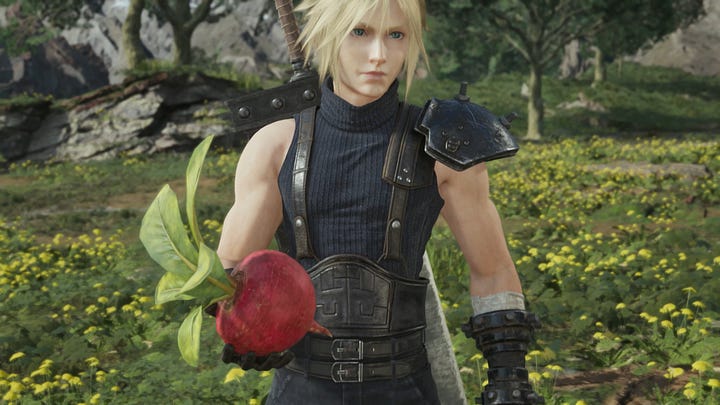
Now comes a step which is completely new to Rebirth. After talking to Chadley and optionally buying some gear for your trusty bird steed, Billy gives you a Chocowhistle that allows you to call Piko from anywhere in the Grasslands.5 However, before you can zoom across this first open-world zone, you first need to complete a test race to get accustomed to riding this majestic bird—and the controls.6
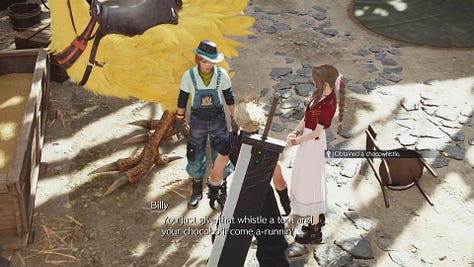
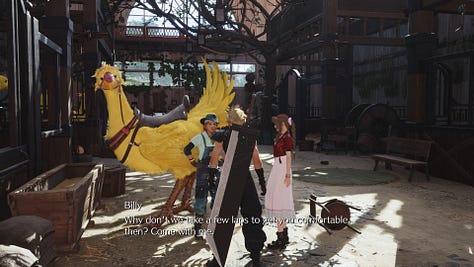
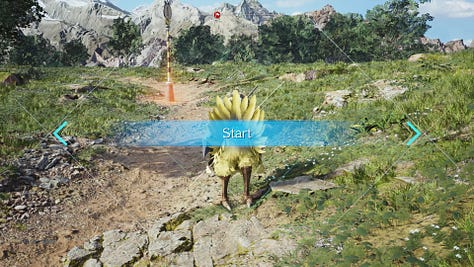
And that’s it. You’re now free to roam the Grasslands, hop into the murky waters of the swamp down south, and eventually run into the sneaky snake. But before we cover that, we need to address the black elephant in the room. The reason we’re even on this journey: their Search of the Man in Black.
The Original Man in a Black Cape
After learning about the means to cross the marsh, Chocobo Bill also lets you know that he has seen another person that was heading to the marshes. However, without a Chocobo, the Midgar Zolom most likely already got him.
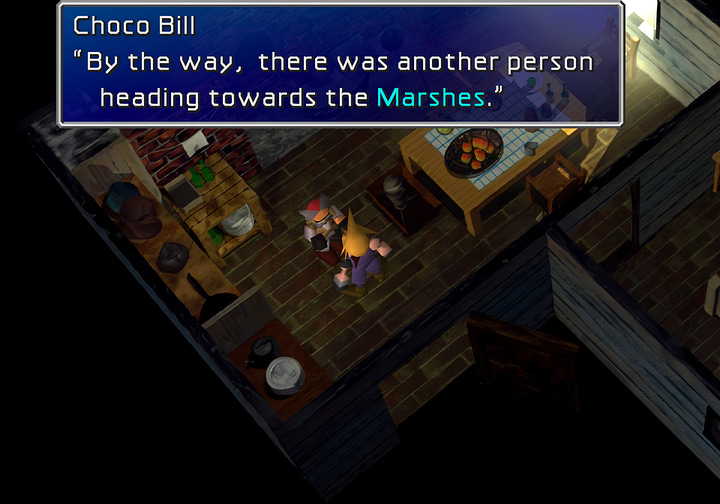
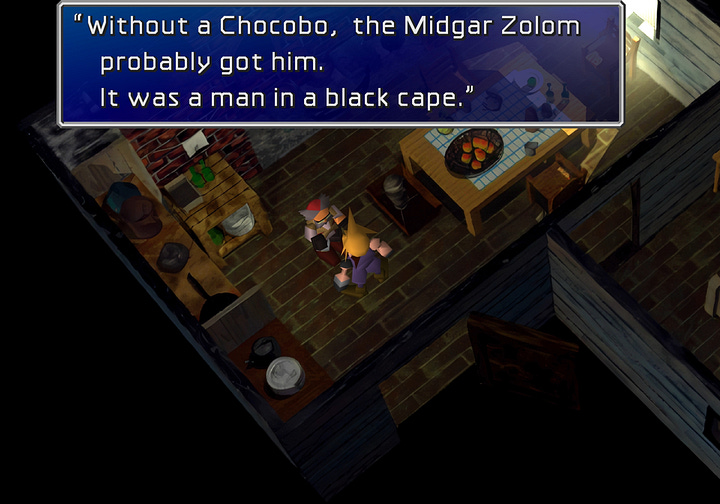
Turns out that this man in a black cape was Jenova’s body in disguise7 and also the one who “turned” into Sephiroth to slay another one of those giant serpentine beasts by dropping it on a dead tree turned oversized stake.8
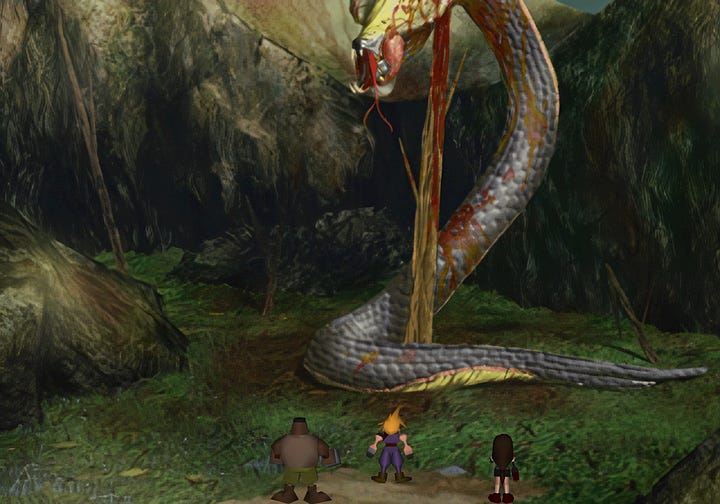
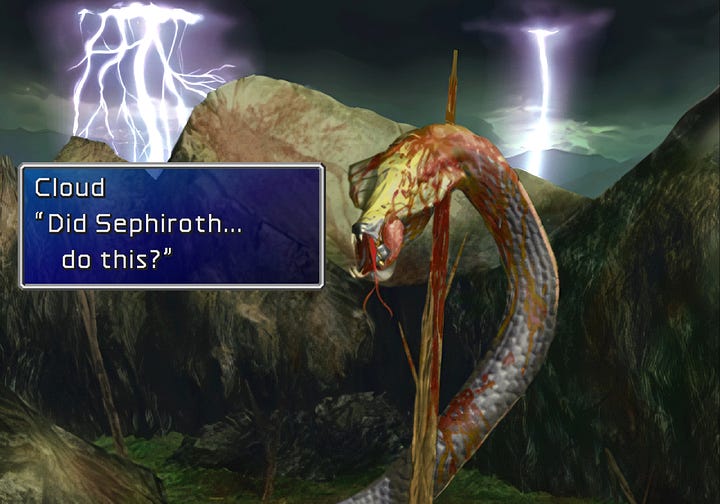
And that’s essentially the extent of the information we receive regarding Sephiroth. A man in a black cape walked towards the marshes and on the other side, we find a dead snake. One we had no chance against in battle during a normal playthrough. Quite an intimidating scene which effectively demonstrates Sephiroth’s strength without having to actually show any action. Seeing the aftermath is enough.
We only hear and see key points and fill out the rest with our imagination. This is the strength of this short segment which follows after seeing a stabbed president and hearing about Sephiroth’s past through Cloud’s tales. Thus far, we haven’t seen Sephiroth actually do anything crazy.9 Only the carnage he’s left behind.
The Reborn Black-Robed Man
As detailed above, we only hear about that black-cloaked man but never see him. Rebirth treats this part differently in that neither Chocobo Bill nor anybody else at the farm has seen any of the black-robed individuals. Instead, we meet one of them personally on our way through the marshes, apathetically standing on one of the many landmasses. Naturally, Cloud sees him as Sephiroth, as he did with numbers 2 and 49 in Midgar. Contrary to the others, who only see a regular black-robed man. This is the first of several instances where Cloud mistakes one of Hojo’s Reunion theory subjects for his nemesis Sephiroth.10
Cloud
Over there!
It’s SephirothTifa
What!?Barret
I don’t see Sephiroth…do you?Tifa
No… I don’t.
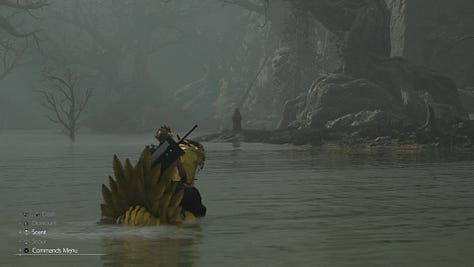
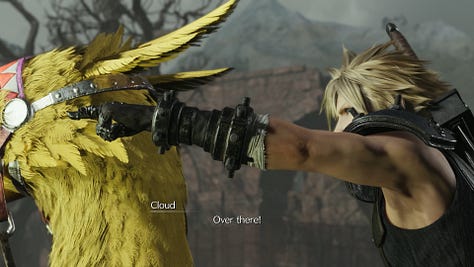

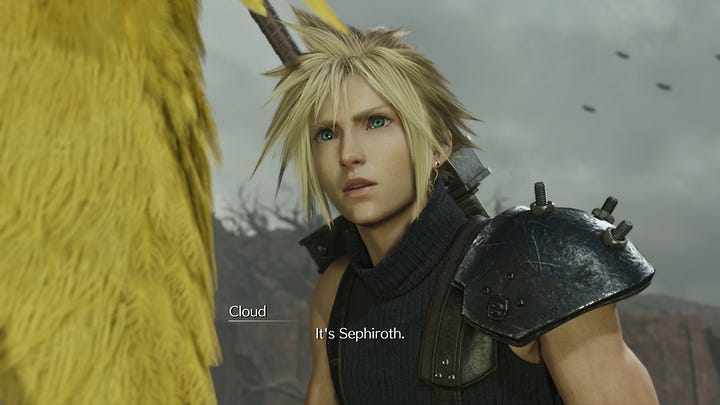
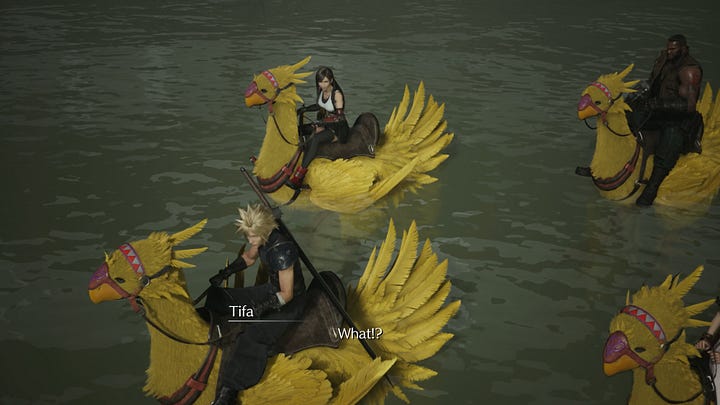
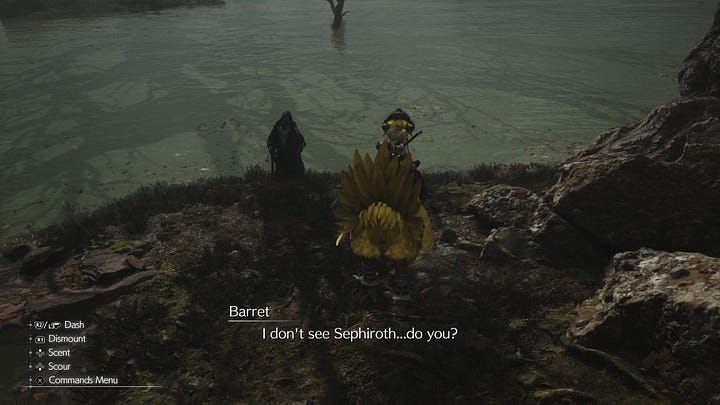

The call for the Reunion is strong. It’s how Jenova and Sephiroth call their subjects to them. Show them something which spurs them on to take part in the Reunion, willingly or not. In the case of Cloud, the image of Sephiroth is enough to keep him going. On a journey to eventually retrieve the Black Materia and deliver it to the real Sephiroth waiting in the Northern Crater.
It seems like this illusion only lasts for a few moments. Towards the end of the cutscene, only a plain black-robed man can be seen, albeit surrounded by a puff of black smoke, signifying the transition back to normal. For Cloud’s eyes only I’d wager, since the others never saw anything other than the hooded black robe in the first place. Even though the second image below is shown right after a close-up on Tifa’s confused face.
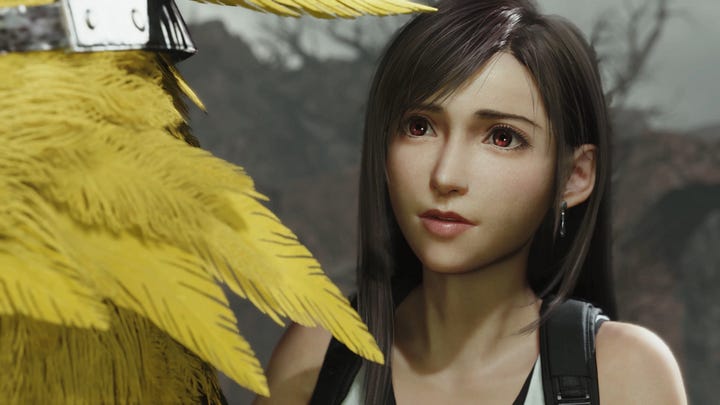
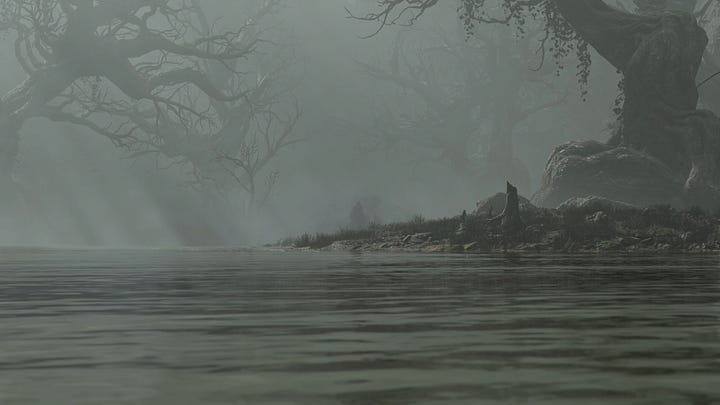
This is just a small and rather innocuous scene but it shows again how Cloud is the only one seeing things that the others don’t when it comes to images of Sephiroth. Keep this in mind for later.
Mandatory Pain
As mentioned in the opening parts of this article, the battle against the Midgardsormr is made mandatory in Final Fantasy VII Rebirth whereas the Midgar Zolom encounter in the original game was heavily discouraged and thus optional. Though you could learn a very powerful enemy skill by successfully taking on the challenge.
Despite being now mandatory, many aspects of the original game remain. For example when the Chocobos flee in fear when the “dry land'“ beneath their feet turns out to be the scaly back of the infamous serpent. This reminds of the fact that you have to dismount your freshly caught Chocobo after crossing the marshes in order to enter the Mythril Cave beyond, which causes the bird to flee back into the wilderness.

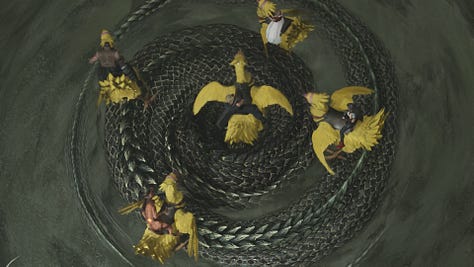



The battle itself, while heavily expanded upon, does contain similar elements, especially Midgar Zolom’s two main attacks, namely Blown Away and Beta. The former is a counter attack which ejects a party member from combat, emptying the affected character slot for the rest of the battle. The silver lining: when you lose against Midgar Zolom after this attack, you won’t receive a Game Over and are merely placed back onto the overworld to the swamp’s north-eastern shores close to the Chocobo Farm. After all, the ejected party member didn’t suffer a KO as they are classified as having run away.
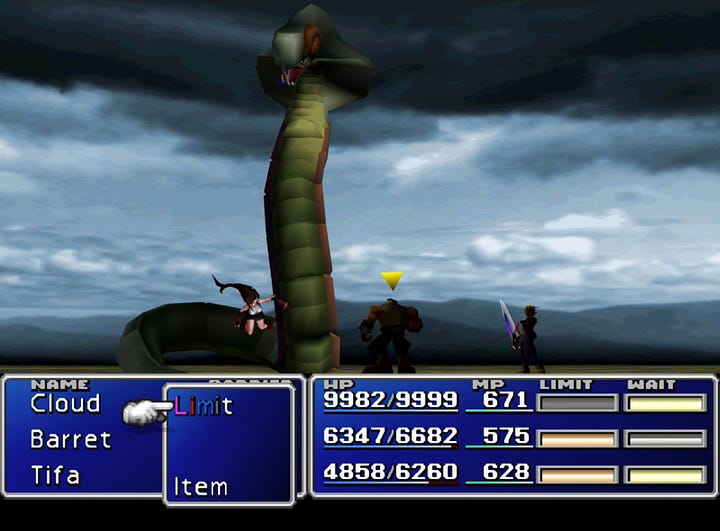
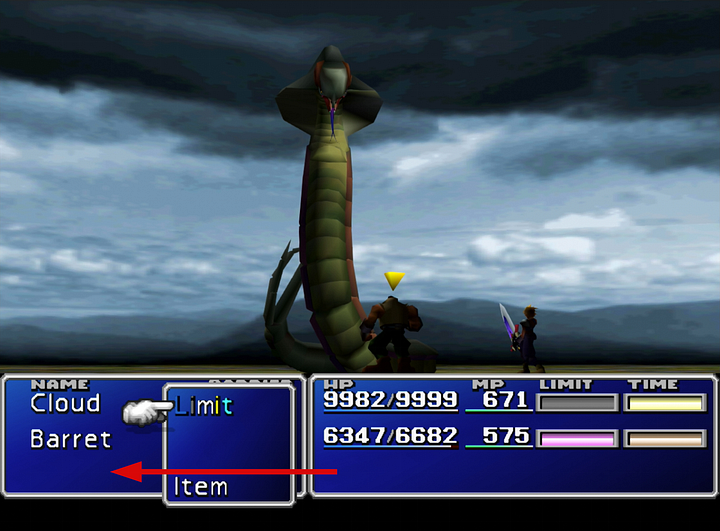
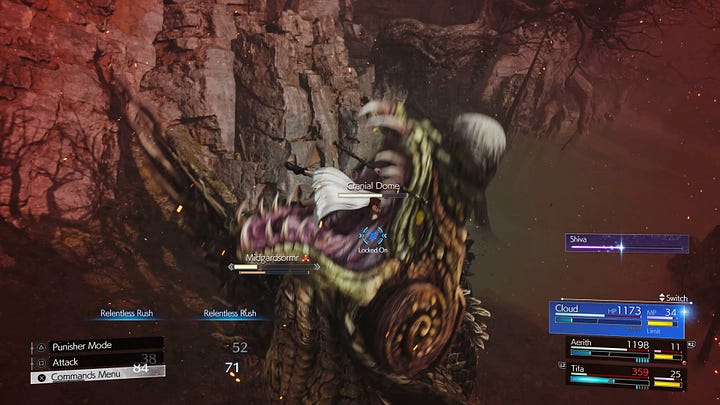
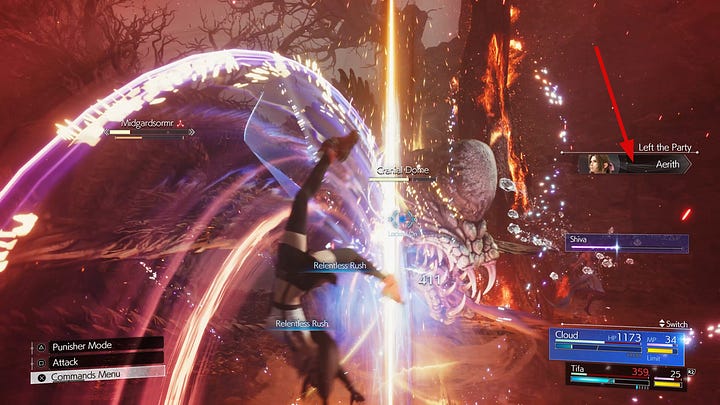
In contrast to the original game, the Midgardsormr devours its prey instead of ejecting it from battle—see above—, but also disgorges it again after a certain amount of time or when pressured.
The more famous of those two attacks by far is Beta, a fiery tornado-like magic attack which somewhat resembles an atomic mushroom in the original game.
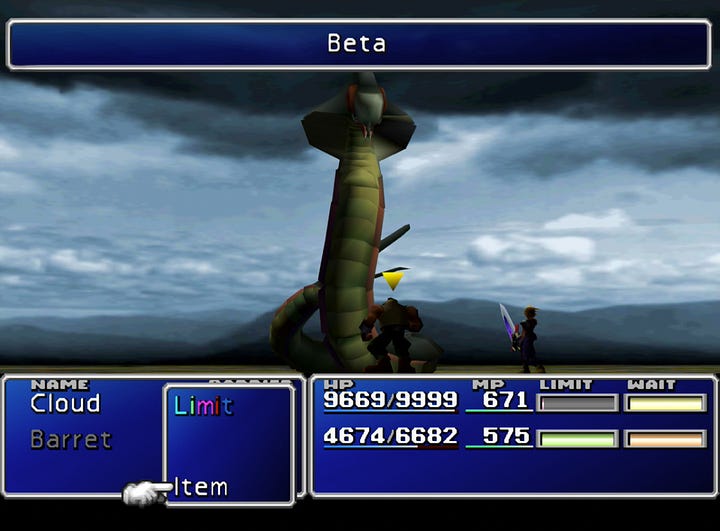
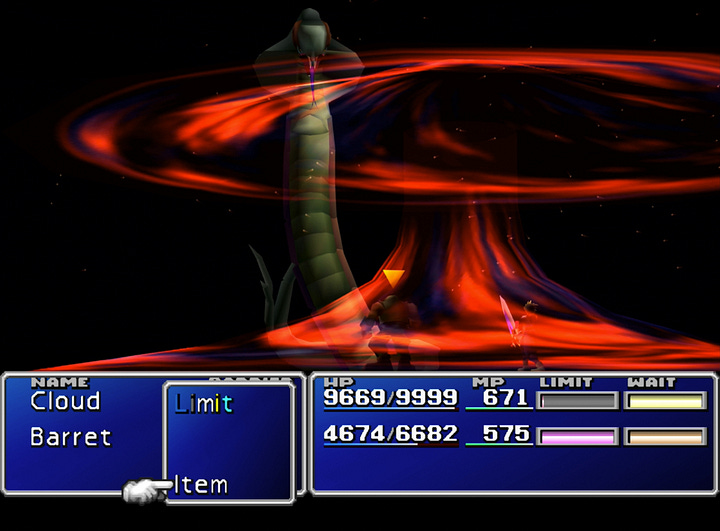
While the Midgar Zolom casts it as a counter attack instead of Blown Away when below 1500 of its 4000 HP, the Midgardsormr automatically unleashes Beta during the transition to its third battle phase, setting surrounding trees on fire. During that third phase, Beta may be used again if the battle gets drawn out for too long.

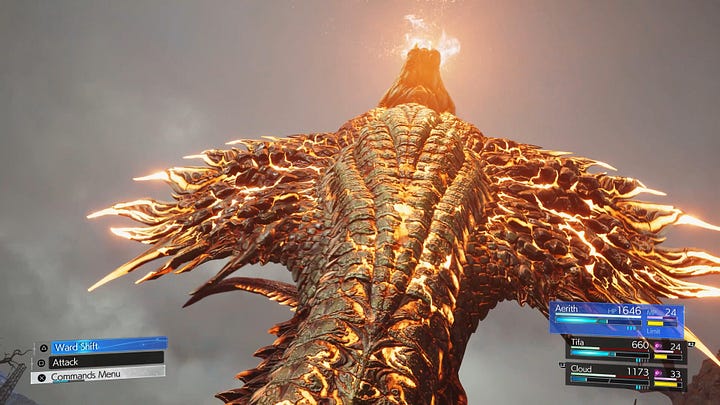
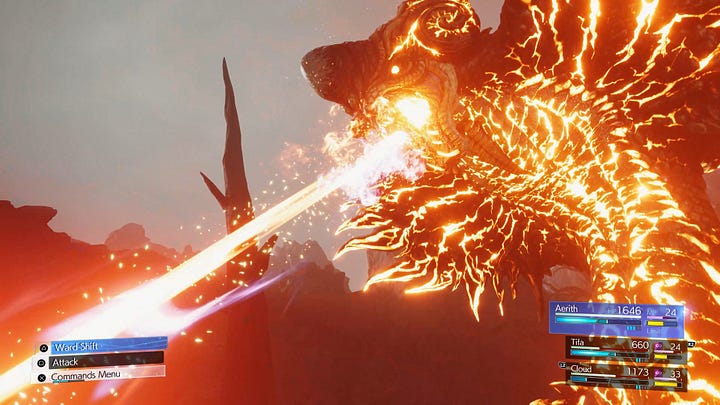
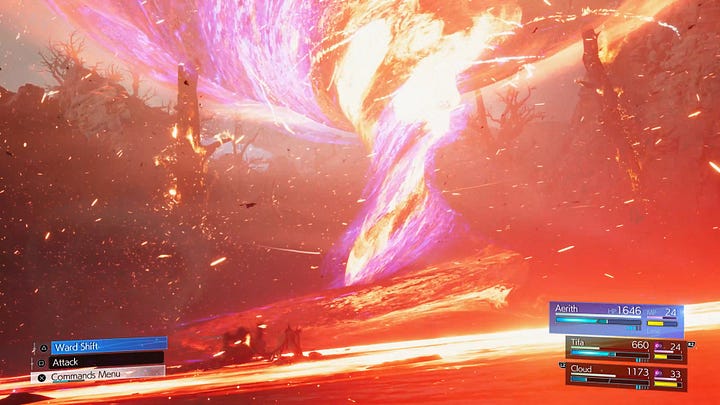
Unfortunately, Beta cannot be learned as an enemy skill, despite the Enemy Skill Materia being in the game and already available. This is due to the fact that in Final Fantasy VII Rebirth, enemy skills are not learned in battle by being hit, rather by unlocking and completing Chadley’s seven Biological Intel VR combat challenges.
Bummer. I would have loved to drop a Beta nuke onto unsuspecting enemies. Especially Rufus in chapter 12.
In any case, once you defeat the Midgardsormr, which gets impaled during the following cutscene, you’re finally free to roam the swamp on foot and need not rely on Piko and his pals anymore.
Wait, back up a bit… The Midgardsormr gets impaled during a cutscene?
Yes. This post-battle cutscene embodies the main deviation from the original material. There, if you manage to defeat the Midgar Zolom, nothing happens and you can go about your day. It is a mere optional challenge, after all. The scene in which everybody sees another Midgar Zolom impaled on a dead tree described earlier in this article happens nonetheless. However, we don’t see how Sephiroth defeats and kills the serpent.
In Rebirth, however, we do witness everything. Besides qualifying for a required chapter-ending boss battle, I think that this encounter was also made mandatory specifically to show how the giant serpent gets impaled. On one hand to show Sephiroth’s might in action. Whether you personally like this change or not, I still think it’s quite effective to put the difference in power levels between our party and their object of pursuit on display, especially since he’s not even physically there.
On the other hand, there’s the part with Cloud being dragged underwater and saved by Sephiroth, and many other details that may be eyebrow-raising to those who pay attention.
Dissecting the Scene
And exactly this post-boss battle scene is the crux of this analysis and the reason why we will go through the whole segment shot by shot.
For a casual player or for those more involved in gameplay and less interested in deep lore, subtext, and the game’s mysteries, this scene may seem straight forward. The Midgardsormr is defeated but not dead and manages to snag an inattentive Cloud and drag him underwater to most likely devour him and satiate its hunger for trespassing RPG protagonists. Luckily, Cloud’s nemesis does not approve of this ending and saves his puppet11 from certain doom by killing the irate snake for good. Cloud is saved, the others happy, and the journey can go on. Case closed.

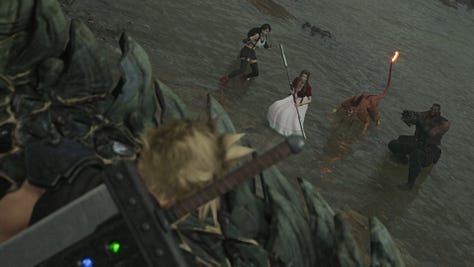

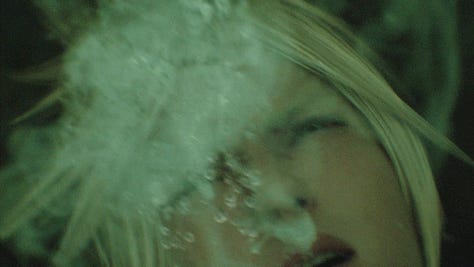

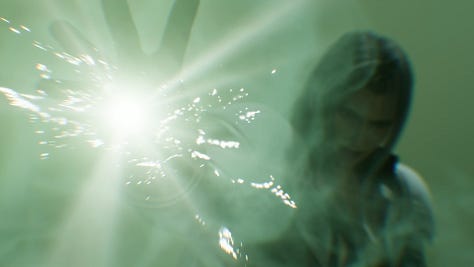

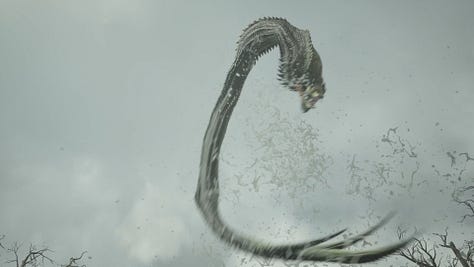

But that’s a very surface-level understanding of this scene. A legitimate one, but lacking a lot of nuance and context nonetheless. And that’s the beauty of this Final Fantasy VII remake project. The general story progression and individual scenes are pretty straight forward on the surface. Some details may seem confusing and one may wonder why certain events happen the way they do, but the overall depiction makes sense.
However, when you dig deeper and really pay attention to the details and start connecting the dots, an entirely new world of possibilities and understanding opens up to you. Whether that’s to your liking or not is a different matter entirely. In any case, this scene contains a lot of such details that paint a different picture than one would assume.
Let’s get into it.
Hungry and Vengeful Snake
Right after defeating the boss monster, it squirms and flees underwater. Threat neutralized. Or so it seems.


Unfortunately for Cloud, it immediately initiates a counteroffensive after he sheathes his weapon and turns around to his team mates, letting his guard down. So much for being a Ex-SOLDIER. A true 1st Class SOLDIER would not be so careless.12 And that’s what almost seals Cloud’s altered fate. The Midgardsormr reappears, attacks, and, despite his initial and successful dodging attempt, manages to entwine its body around Cloud and subsequently drag him down into the depths of the bog.
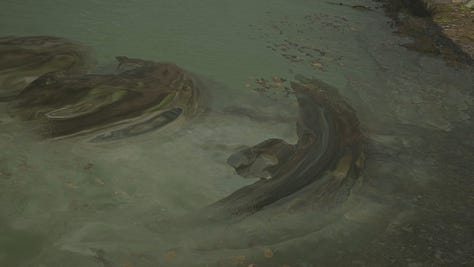
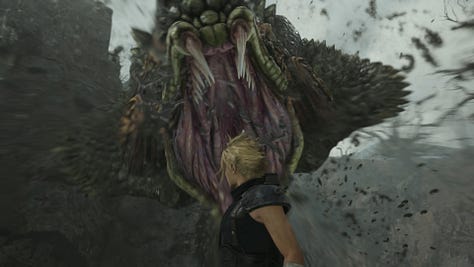

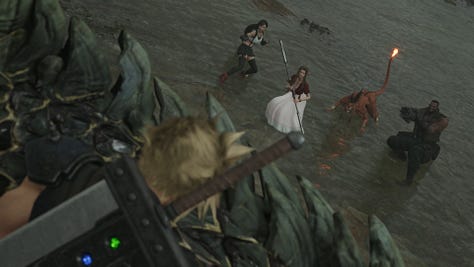

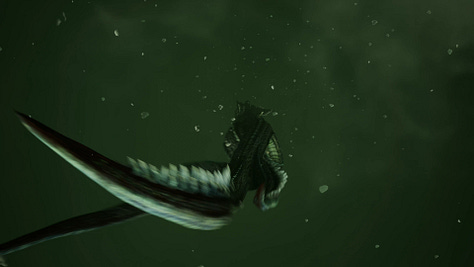
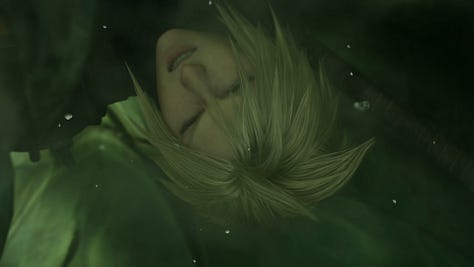
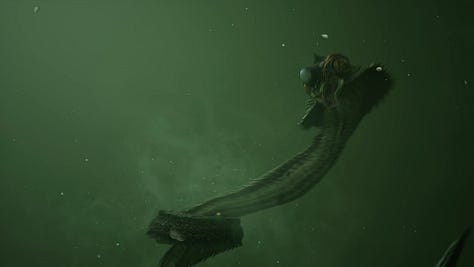
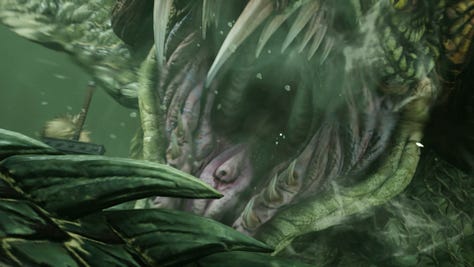
So far, so good. Very straight forward. Different, but clear. A thrilling and tense addition an already badass boss battle. However, here’s where things become interesting.
Thy Nemesis Cometh
As soon as Cloud starts to lose air and oxygen bubbles escape from his lungs and mouth, a green glitch effect appears, which usually indicates a memory intrusion into Cloud’s current consciousness. Either by repressed memories triggered by a current experience, memories of the future he was accidentally given by Aerith in chapter 2 of Remake, Jenova cells activated through the proximity to other subjects of Hojo causing a call for the Reunion, or a Sephiroth appearance in Cloud’s head.13
Which one is it here? We’ll get to that in a bit.
More importantly, this green memory glitch effect directly leads into a gathering of black and purple particles right above Cloud. In fact, Cloud’s oxygen bubbles are ascending right into the center of that black and purple particle vortex.
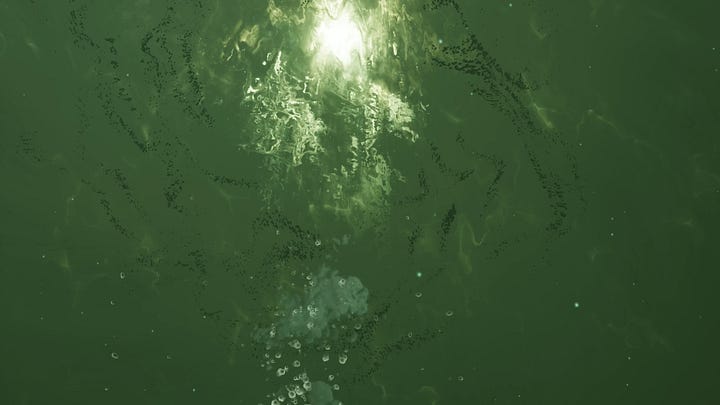

Even more curiously, the scene cuts back to another close-up on Cloud’s face, still overlaid by those green glitch effects. Meaning: something strange is still afoot.
Then the camera closes in on his right eye which is then slowly covered by black…stuff. It doesn’t look like a mere shadow cast by that gathering of blackness above Cloud. It looks much more like Cloud himself is being engulfed in said blackness, since the screen becomes almost fully covered in black tendrils, insinuating a complete consumption of Cloud by said blackness.
What follows next seems more straight-forward again. That previously mentioned concentration of black and purple smoke and particles further converges and eventually forms a familiar silhouette and face: Sephiroth.
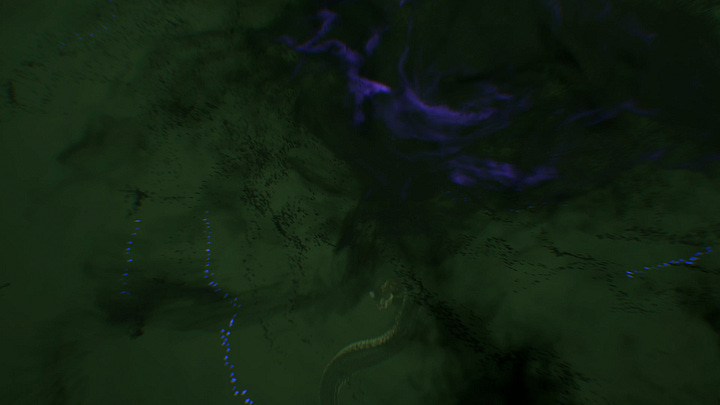
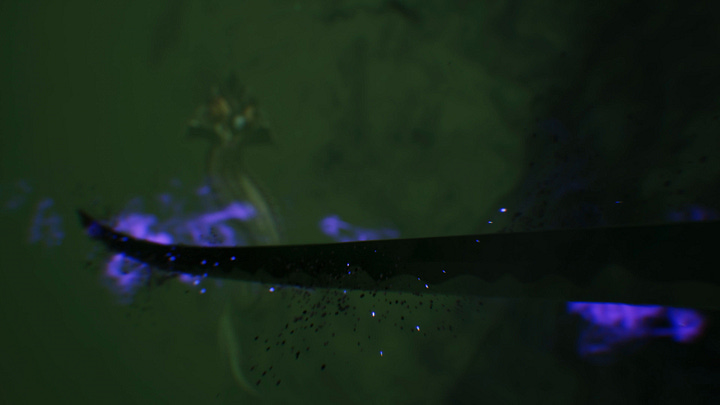
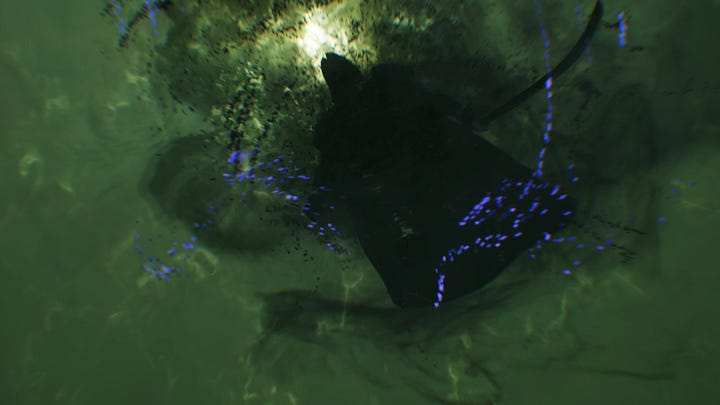
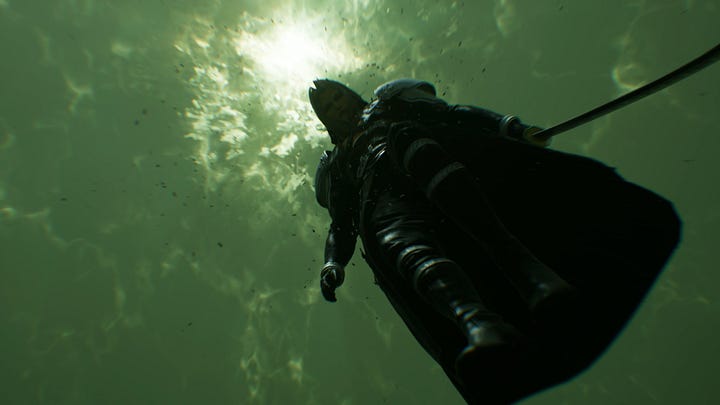
If we look closely, we can spot a blurry Midgardsormr in the background, especially in the second image above. That alone is not worthy of note, so why point it out? Well, we see the snake’s whole body but no Cloud. The Midgardsormr was so focused on his afternoon snack that a mere apparition behind it should not have distracted it to the point of dropping Cloud who already seems to have sunken so far down as to not be visible on screen at this angle. Sephiroth looks downwards at the snake, after all. Unless its bestial instincts recognized a much bigger threat, but not this fast without knowing what’s up before said threat even fully materializes.
Another small detail: even after having fully emerged, we can spot a few black tendrils crossing Sephiroth’s mouth when he cracks a smile during the following close-up shot. Curious…
Snake-eyed Staring Contest
Now follows a scene similar in essence to the beginning of the Nibelheim flashback in chapter 1 where Sephiroth effortlessly dispatches both Disgorgons. A quick horizontal slash followed by an Aeroga14 spell sends the huge serpent flying back out of the deep bog and right onto one of the burned trees that now acts as an oversized stake. Quite ironic how the Midgardsormr essentially prepared its own demise by casting Beta earlier which rid the trees around the area of their branches, which might have softened the impact and saved it from being impaled.15
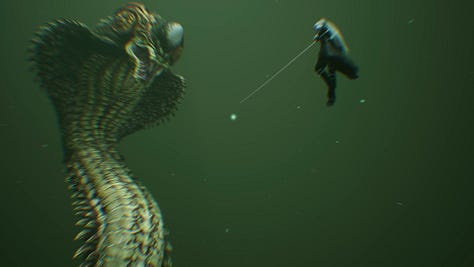
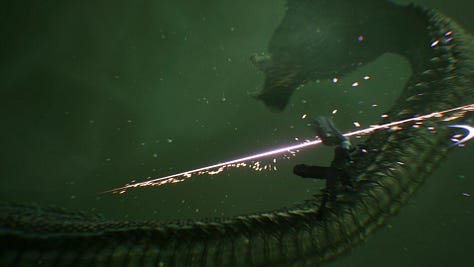
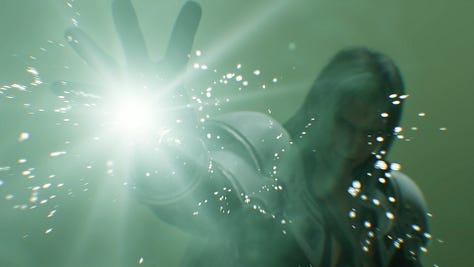
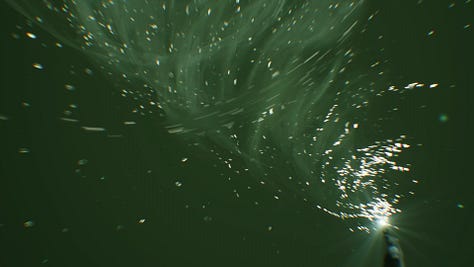

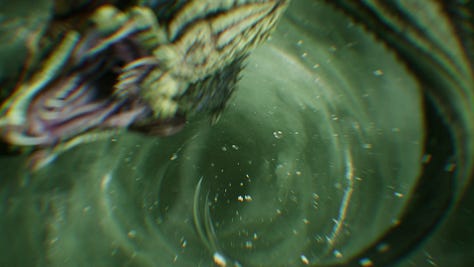



One small detail worth pointing out is the heavy circular motion blur “glitch” effect around the Aeroga spell’s vortex which originates from Sephiroth’s hand and shoots across the spell’s vortex to then shoot the serpent out of the water. As if Sephiroth has to give that spell one last push.
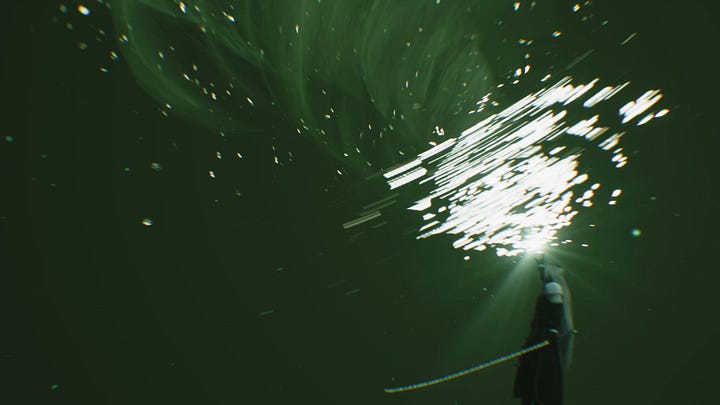

Also take note of how the confrontation between the Midgardsormr and Sephiroth uses heavy chromatic aberration. It’s usually present in pre-rendered cinematics like the opening and the ending, though less perceptive and more along the edges of the screen. Here, however, it’s applied heavily across the whole screen and during an in-engine cutscene,16 which indicates to me that this scene is not quite what it seems. You can see it quite well in the screenshot below.
It’s important to note that Cloud’s team mates all watch and witness this unmatched display of strength, though only the part after the Midgardsormr breaks the water surface, flies through the air, and turns into Schlangenbrot.17 Meaning, they don’t actually see Sephiroth doing it. Keep this in mind.
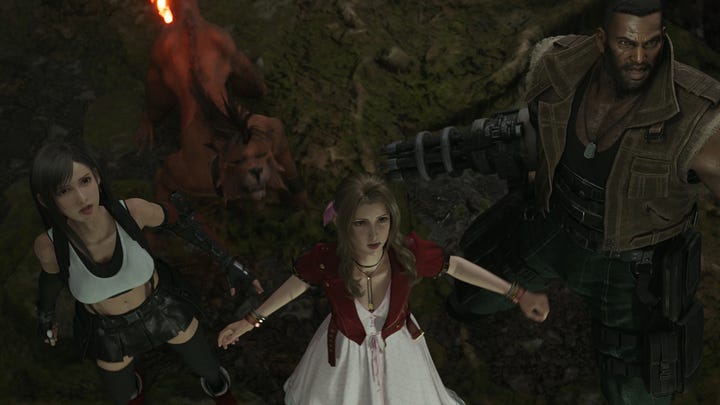
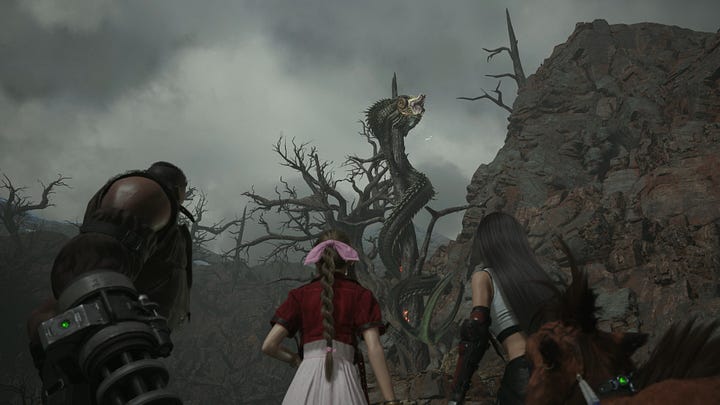
Illusion or Reality?
Back under the surface, we see Sephiroth hovering in the water, then looking down to where Cloud should be, who was never visible on-screen between the emergence of the black vortex and now. After Sephiroth clearly looks down into the depths at something specific, the camera switches to Cloud who’s also hovering in the water not far away from Sephiroth before he begins descending into said depths again.
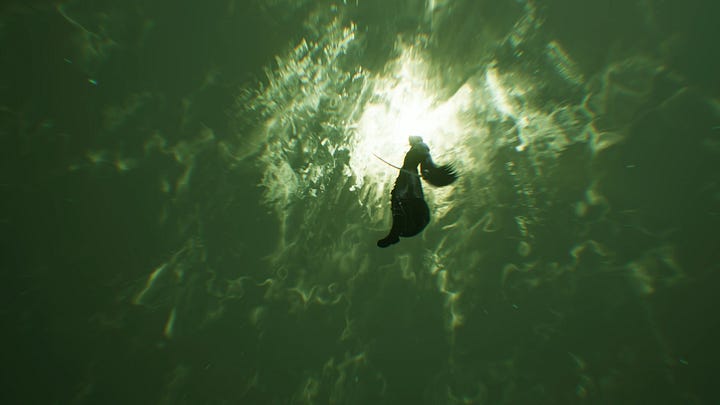
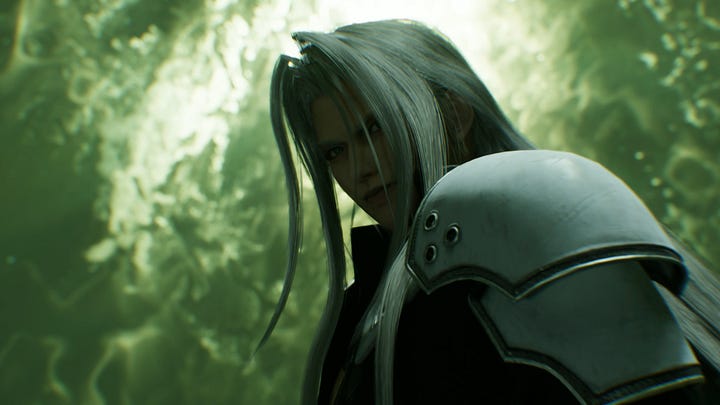

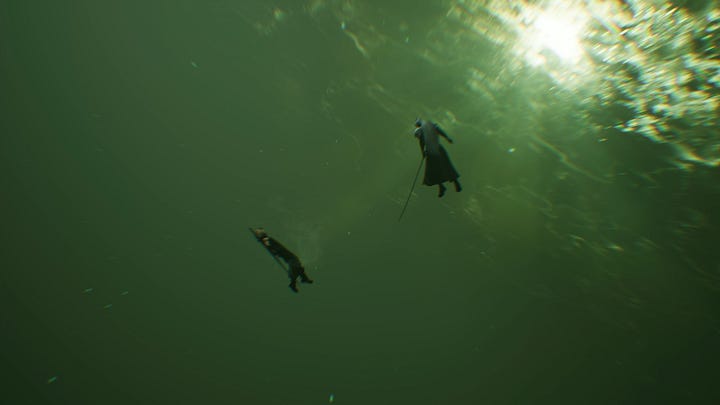
Notice how the fourth picture with both Cloud and Sephiroth being shown from a distance is treated with heavy chromatic aberration again. In addition to that, we can see unnatural rainbow-colored tendrils of light moving around Sephiroth and towards the surface converging at the white light shining from above.
Somehow, Cloud is still conscious. Though to be fair, less than a minute has passed between Sephiroth’s formation and Cloud being shown again here. In any case, Cloud is at his limit and reaches out to Sephiroth for help. However, instead of helping Cloud in any way, he merely fades into the light above. No dissolving into black smoke or particles, no flying away and out of the body of water, nothing. He just vanishes.
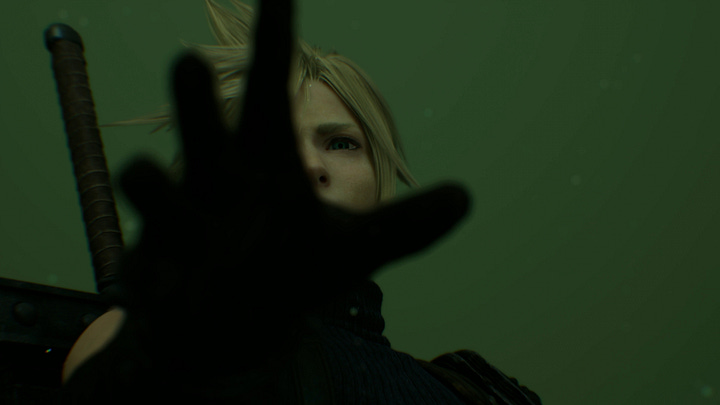

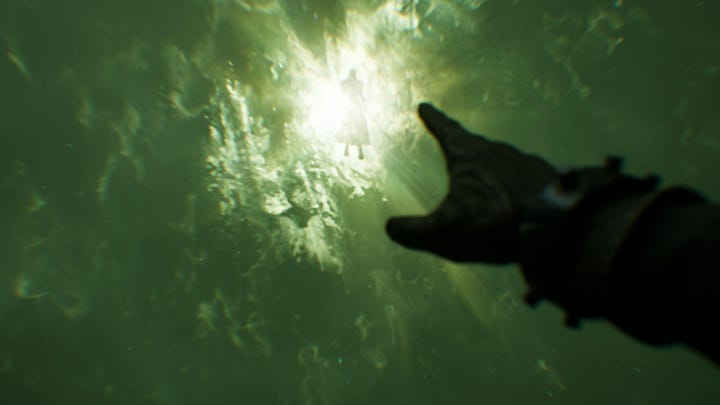

At last, Cloud expels the last reserves of oxygen from his lungs and sinks into the black depths. Yet he somehow ends up safely on dry and solid land past the end of the swamp from where a short path leads towards the entrance to the Mythril Mines.
When reviewing this whole underwater segment, something caught my eye. I already mentioned two instances of heavy chromatic aberration. One with Sephiroth and the Midgardsormr on screen shown from the side and from a distance, and another with Sephiroth and Cloud, also from the side and from a distance. Sephiroth slicing the poor snake is another one. Additionally, other shots in that segment show some chromatic aberration as well, albeit much more subtle and mostly along the edges of the screen.
This could be a mere stylistic choice, maybe because they’re under water, but upon closer inspection, that’s not the case. Chromatic aberration is exclusively used in underwater shots after that black miasma covers Cloud’s right eye and face. Shots above water where the snake is flung out of the swamp and onto the tree shows no signs of chromatic aberration.
This effect also only lasts until Cloud sinks into the dark abyss at the end of the underwater segment.
Another pin for our collection.
Who am I?
Besides visual peculiarities, the music that plays during that last underwater segment feels very familiar. Were you able to catch it? Let’s listen to it first before we compare it to a matching track from the original sound track.
Both pitch and note succession match, although the second block of notes after the chord shift does deviate a bit. The core mood and meaning remain, however. The original leitmotif is clearly audible. The track “Who…Am I?”18 plays in the following two instances:
In the Temple of the Ancients where Cloud briefly loses control over himself after Sephiroth tells him to “Wake up!!” and then proceeds to look and laugh at the mural depicting Meteor,

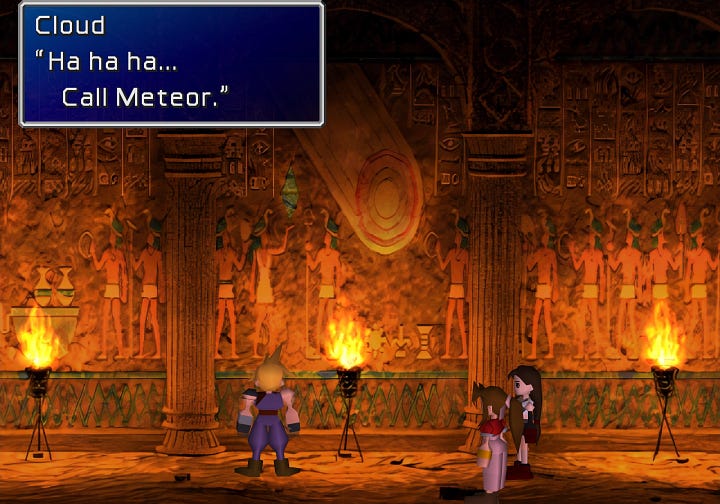
and in Cloud’s subconsciousness after falling into the Lifestream with Tifa when Mideel gets destroyed by a Mako eruption.
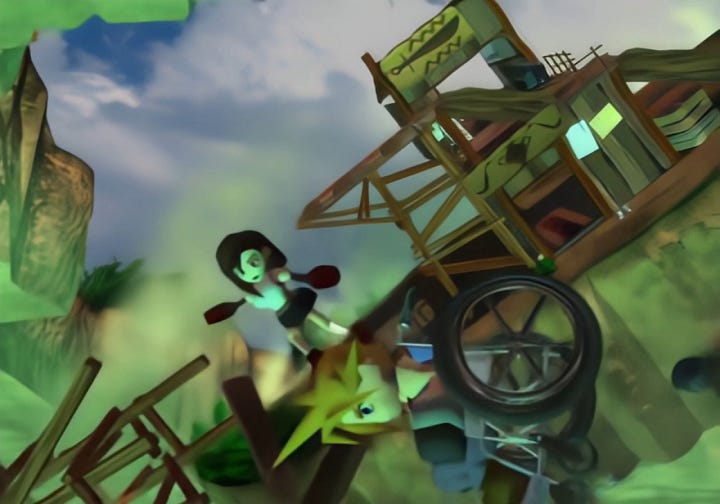
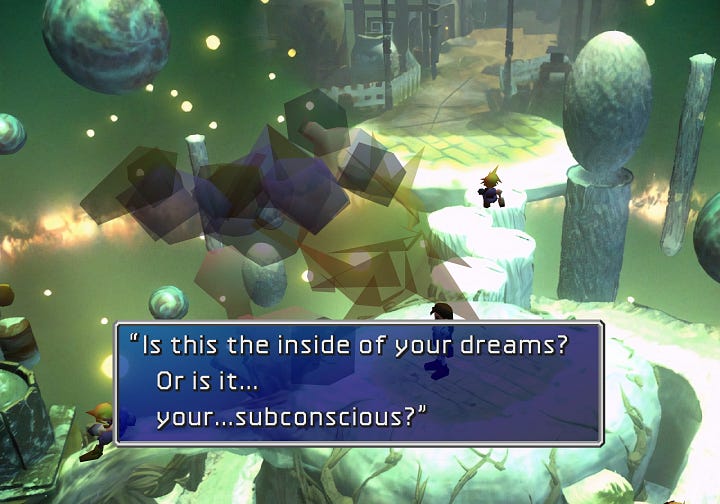
This fact may provide a hint towards the true meaning of this scene. But before we get to that, let’s dissect the rest of this post-battle cutscene.
Back on Dry Land
After the screen fades to black, Cloud is brought back to consciousness by Aerith, who also asks if he remembers who she is, probably to make sure he’s fully back with them. Though I still find it weird that this is her first question and not whether he’s alright, or hurting, or anything of the sort. After all, Cloud was just grabbed, almost crushed, and dragged underwater for a few minutes. Remembering Aerith should be the least of her worries.
???
Wakey wakey!Aerith
You remember who I am?Cloud
Aerith.
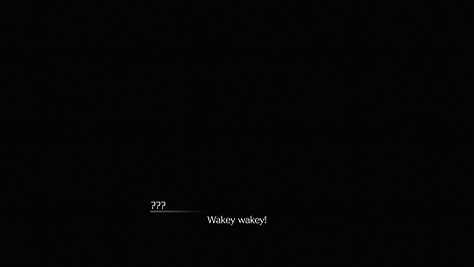
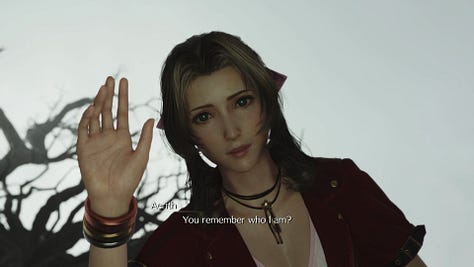

Although, when looking at the Japanese original script, Aerith merely asks whether Cloud can understand or recognize her, which is a more fitting question in this context. She’s curious whether he’s conscious enough versus his memory being intact.
エアリス (Earisu)
わたし わかる?(Watashi wakaru? → Can you understand me? / Do you recognize me?)クラウド (Kuraudo)
エアリス…… (Earisu…)
Though in both cases, the implication remains that Aerith is more concerned about Cloud’s recognition of reality than his physical well-being.
Another pin in the corkboard.
Luckily, Cloud does recognize and remember her, which is a huge relief for the two girls as both immediately light up and Aerith says “It’s good to have you back, Cloud.“ Barret and Red XIII aren’t in the shot, so we don’t know about their feelings. Why not, though? To streamline the scene or to potentially hide their not so amused, stoic faces?
It’s also curious how Cloud does not seem to care one bit about his comrades, as he looks away from them while Aerith is still talking. He wordlessly gets up on his feet, picks up and sheathes his buster sword, then immediately steers the conversation towards Sephiroth by uttering his name in an inquiring tone.
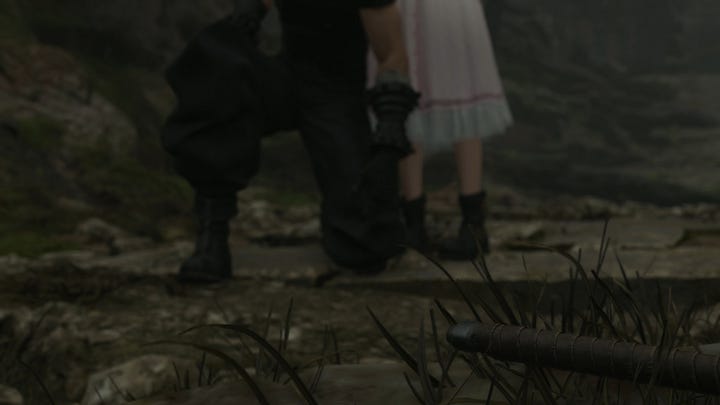
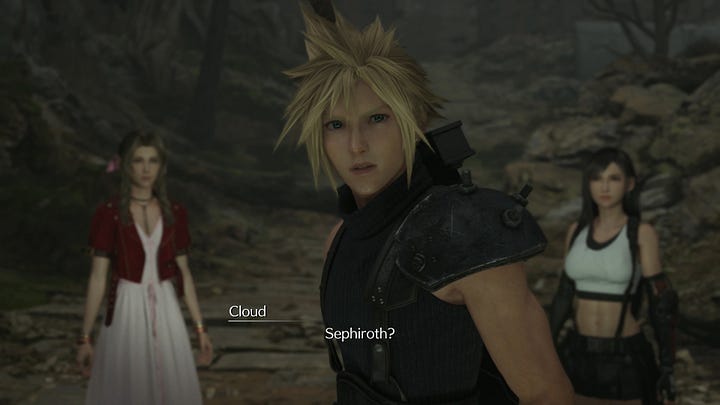
The only answer he receives is a resigned head shake by Aerith. Tifa is out of focus, but her previous happy smile has faded as well.
Cloud then pontificates about Sephiroth’s strength while looking at the impaled Midgardsormr as he is still surprised at what feats the legendary SOLDIER is capable of.
Cloud
I knew he was strong, but still…
This line alone is nothing to bat an eye over. However, the presentation around it is. The camera first shows the snake on a stick and then a close-up on Cloud’s emotionless face. Well, the lower half of it anyway, covering his eyes by omission. We already talked about this visual method in Game Analysis #24 about Aerith’s Secret, so I will only provide a brief summary: whenever the camera focuses on somebody’s lower half of the face and thus cutting off their eyes, there is always more to the current line being said. Something personal being hidden or emotional distress being repressed.
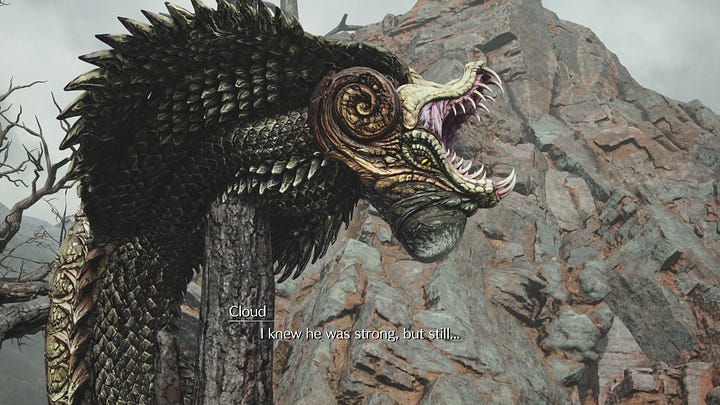

It’s also worth pointing out that literally nobody else comments on that, leading Cloud to switch focus to the three black-robed individuals lurching towards the Mythril Mine’s entrance further ahead. Though even then, only Aerith partakes in that short conversation before control is being returned to the player.
Cloud
Those guys’re looking for him too. They’ve gotta be.Aerith
Yeah… I kinda get that feeling as well.Cloud
Let’s not loose ‘em.

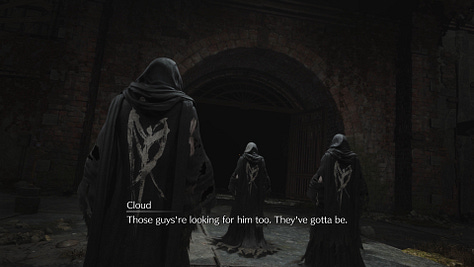

In fact, Cloud and Aerith are the only active participants during this whole scene. Nobody else contributes. What’s more, Barret and Red XIII, as alluded to before, are not even shown on screen until the very end.19
Another somewhat questionable element is how Cloud is being woken up on the dry and solid land across the deep water hole opposite of the battle field despite being shown sinking into the bottomless abyss before the the screen fades to black. Did for example Tifa jump in, dive down, and bring her childhood friend back up to the surface? Did Cloud somehow manage to emerge by himself before falling unconscious for good? For how long was he out? So many questions but no concrete answers and we’re left with mere speculation.
For now.
And that’s it for this new post-boss battle cutscene full of sneak little details to dissect. Details which raise some serious questions and confirm that there’s more to this segment than meets the eye.
But what? Let’s get into theory territory now, shall we?
A Black Cloud with Silver Linings
Many elements of the scene depicting the Midgardsormr’s demise feel off and strange, as outlined previously. But before we make sense of those peculiarities, let’s briefly summarize them to provide a clear overview to use as a foundation for the upcoming theory.
When underwater and losing oxygen, Cloud suffers from a memory glitch.
Cloud’s air bubbles rise towards a point above where black and purple smoke and particles gather in a vortex-like pattern.
Black miasma gathers around Cloud’s face when zoomed in on his right eye.
Sephiroth forms out of the previously mentioned black vortex and draws the attention of the snake which seemingly let Cloud go beforehand, who is also not visible anymore.
A closeup on Sephiroth also shows a few remaining black miasma tendrils around his mouth and cheek.
Sephiroth strikes the serpent and catapults it out of the swamp water using a powerful Aeroga spell with a motion blur glitch effect, causing it to become impaled on a dead tree.
Cloud’s team mates only witness the snake flying out of the hole and onto the pointy tree. The same hole it vanished into with Cloud in its clutches only a minute ago.
Underwater, Sephiroth looks back at a still conscious Cloud who reaches out to him.
From Cloud’s point of view, the image of Sephiroth fades into the illuminated water surface above. No effects or particles, just a simple fade out.
Despite Cloud visibly sinking into the bottomless abyss, he wakes up on dry and solid land. How he got there and for how long he was out is left to our imagination.
After the black miasma covers Cloud’s face, the rest of the underwater scenes are treated with a light to heavy chromatic aberration effect, despite being an in-engine cutscene.
Before Cloud sinks into the abyss, an arrangement of the track “Who…Am I?“ from the original game’s soundtrack can be heard.
Aerith’s first question to Cloud is whether he remembers or recognizes her instead of inquiring about his physical well-being after what he just endured.
Cloud is not interested in their sympathy and wants to know about Sephiroth. Nobody answers but Aerith, though only with a pensive shake of her head.
Cloud ponders about Sephiroth’s strength while looking at the impaled Midgardsormr and only the lower half of his face is shown, hiding his eyes.
When deciding to follow the black robes ahead, only Aerith takes part in the verbal exchange.
During that whole scene after Cloud comes to, only Aerith speaks and Barret and Red XIII are not shown at all until the very end where the whole group is presented in a single shot right before control is returned to the player.
While it’s easy to take the surface-level sequence of events at face value and just conclude that Sephiroth did it, like in the original game, the litany of discrepancies and oddities paint a different picture, and a pretty clear one at that. At least to me.
Cloud has been shown to suffer from serious memory and cognition issues. In Remake and the first two chapters of Rebirth. Not to mention the many upcoming situations. Also remember that short scene on the way to the Midgardsormr boss battle site where the group comes across just another black-robed man. Cloud is the only one who thought it was Sephiroth. He’s therefore already primed for seeing Sephiroth where there is none. Same with an earlier encounter in Kalm’s inn at night just before following Tifa outside. In both instances, one of Hojo’s Reunion theory victims was nearby.
But what about Sephiroth’s underwater appearance?
To provide proper context, we first need to find out what prerequisites need to be met for a Sephiroth appearance in Rebirth. We already extensively talked about Sephiroth’s appearances in Remake, but Rebirth follows slightly different rules as new elements are in play.
Since we’ll most likely talk more in-depth about Sephiroth’s other appearances in other articles, allow me to only briefly summarize the different Sephiroth apparition methods.
Sephiroth can appear to
a subject with Jenova cells in their body—and even normal people—by either superimposing his image over another subject with Jenova cells or just appear out of thin air close to one. See Marco and number 2 in Remake, Broden and other black-robed individuals in Rebirth, even in the Temple of the Ancients’ clock plaza and Rufus’ ending scene.
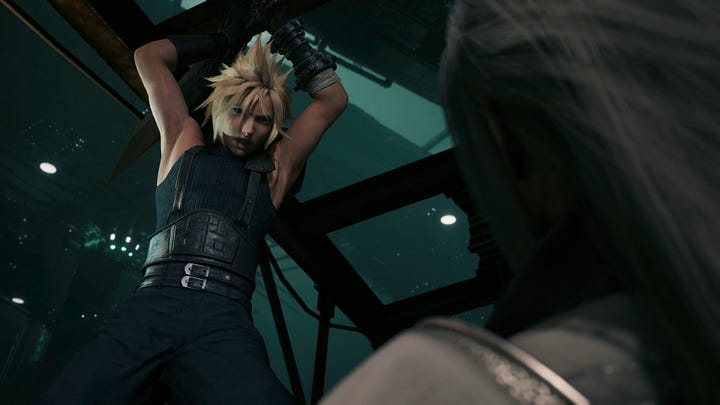


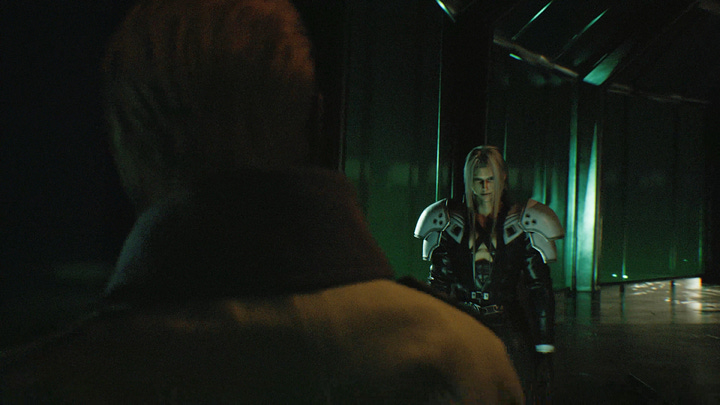
Above: using Marco and number 2 in Remake — Below: to Tseng and Rufus in Rebirth either Cloud or the whole group through black Whispers he now controls.20 See the Gongaga reactor segment, the end of chapter 13 after the Temple of the Ancients has vanished, and the Forgotten Capital where his appearance is nigh identical to that in the Singularity in Remake.
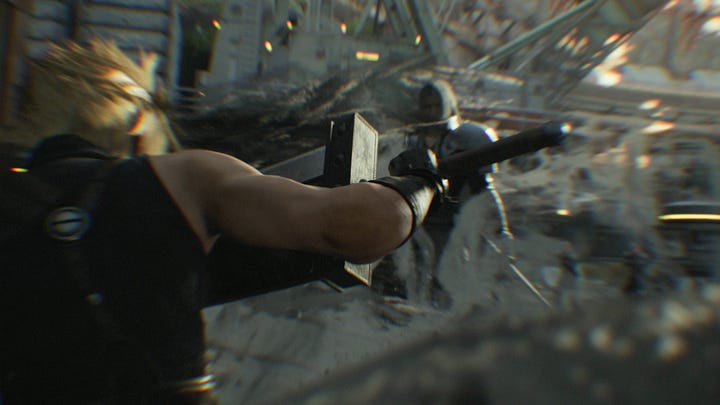
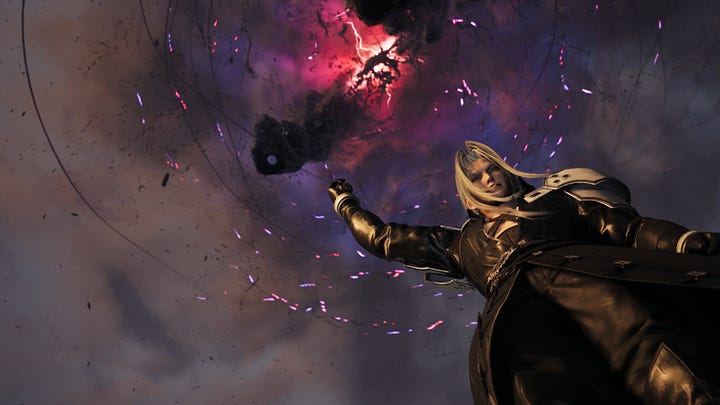
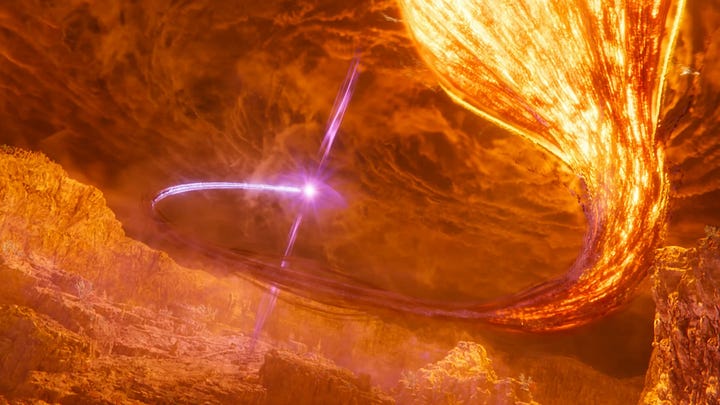

either Cloud or the whole group without a visible conduit when close in a place abundant with Mako, sometimes accompanied with purple smoke and particles, sometimes by his black feathers. See the Village of the Gi, the entrance to the Lifestream river leading to it, in the depths of the Temple of the Ancients, as well as in the space between worlds.
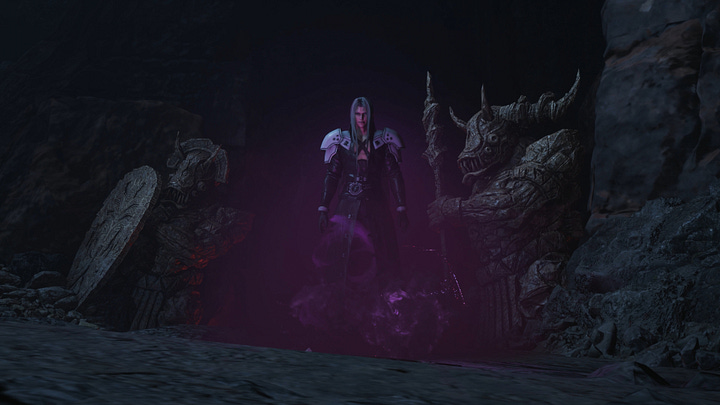

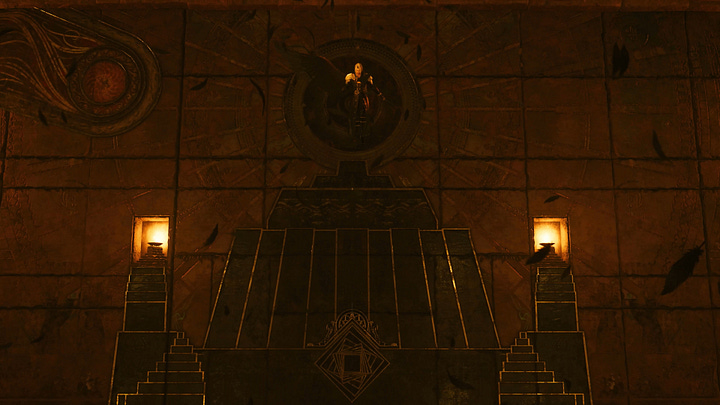
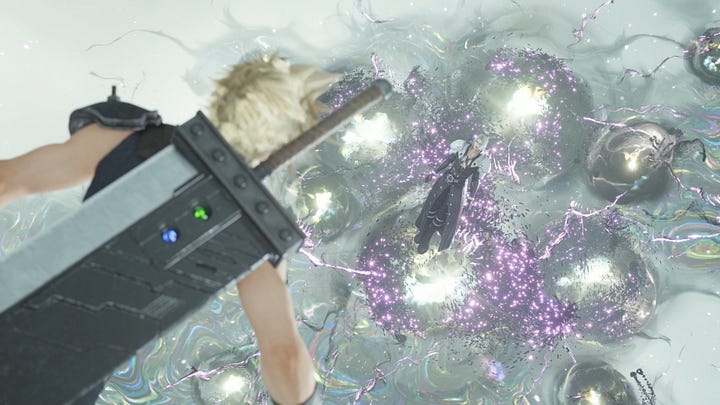
Points 1 and 3 talk about visual appearances while point 2 covers physical manifestations where he can interact with and change the physical makeup of reality. Be it attacking a lifeform or destroy a whole ancient city.
In previous analyses, we pointed out that water is usually used as an equivalent to the Lifestream or at least a conduit for it. It is therefore possible that the swamp may just act as a stand-in for the Lifestream, allowing Sephiroth to just appear as he pleases. However, the only other instance of Sephiroth physically appearing underwater and simultaneously being able to attack a physical being happens in chapter 9 in the depths of the Mako pool beneath the destroyed Mako reactor where he attempts to kill Tifa and the baby Weapon, though only manages to wound the latter. And how does he appear there? Through a vortex of black Whispers.
This place is obviously more saturated with Mako than a simple swamp, where Sephiroth appeared in a vortex of simple smoke and particles. But there is also no black-robed dude around. So, how is Sephiroth able to appear to Cloud and the Midgardsormr and physically interact with the latter?
Well, remember how the black miasma seems to engulf Cloud instead of casting a mere shadow over his face and how we don’t see Cloud at all afterward until the snake is dead? The only conclusion I can think of which fits into all fifteen points mentioned previously is…
*Drumroll*
Cloud “became” Sephiroth and killed the snake himself.
Yes, I know, bold statement. Let me guide you through the scene again with this revelation in mind.
Cloud is fighting for his life while being smothered by the giant serpent. With his seemingly final gasp and expulsion of oxygen, a green memory glitch happens and a vortex of black and purple particles and smoke forms above Cloud before black miasma engulfs his face.

From this point on, Cloud is not shown on screen for a while.
“Sephiroth” fully materializes out of black and purple smoke and particles, and the Midgardsormr is already solely focused on him. Before “Sephiroth” slays the beast and catapults it out of the water, he smirks at his adversary as black streaks of miasma remnants are slithering around his mouth.
Underwater again, we see only Sephiroth from below against the sunlit water surface. From quite the distance, I might add. When we see Cloud again, he’s right below Sephiroth. In a space where no Cloud was present during the past minute or so.
It’s also worth noting that, when Cloud is shown again, the camera moves in such a way that shows Cloud slide into view from behind Sephiroth, as if to reveal him again after being “absent” for a while. I’m positive that this shot wasn’t chosen just for the scene director’s amusement or because it looks cool.

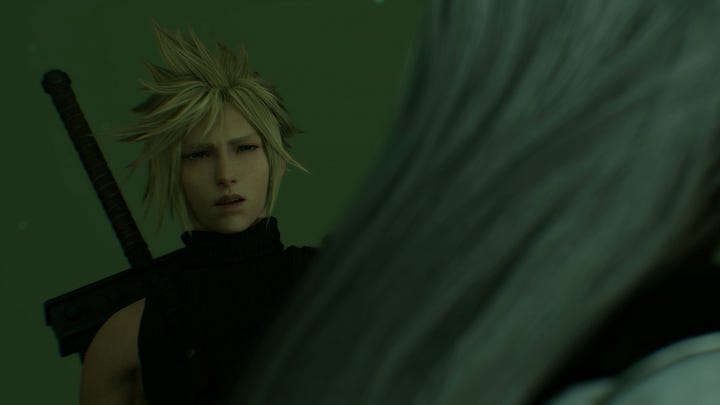
When Cloud sinks into the abyss again and reaches out to Sephiroth, we see the latter fade into the light from the former’s point of view. As if Sephiroth was never there in the first place.
Besides Cloud not being present for most of the scene and those other elements outlined above, there’s another piece of evidence for Sephiroth not being actually there. Remember the chromatic aberration effect that’s only shown underwater and only after the black miasma engulfs Cloud’s face? It certainly makes those scenes feel eerie and unreal. And I think that’s exactly what this effect is meant to convey. What we see on screen while the chromatic aberration effect is in place does not reflect reality but an event Cloud believes to perceive when in fact he was the one doing everything all along.
And here’s where the music comes in. We already established that the leitmotif from “Who…Am I?”—which is itself derived from Final Fantasy VII’s Main Theme—is being used in the arrangement that plays during the segment in which Cloud appears again and sinks into the abyss, stretching out his hand to Sephiroth who fades into the light above. And where is the track “Who…Am I?” used in the original game? In a place where Cloud is also taken over by Sephiroth, albeit briefly, and during the Lifestream sequence where he has to question his current identity and find back to his true self.
When we apply this to the scene in Rebirth, this musical cue may tell us that Cloud is being taken over by Sephiroth and has to question his identity. Remake’s version of the track “Who Am I?“ also plays in a scene of similar meaning. After falling from the reactor bridge into Aerith’s church, his true self calls out to him, telling him to stand up, just like he did when falling off the bridge with Tifa all those years ago. Right after, Sephiroth intrudes and claims that he’s Cloud’s master21 and that there’s still so much to do.
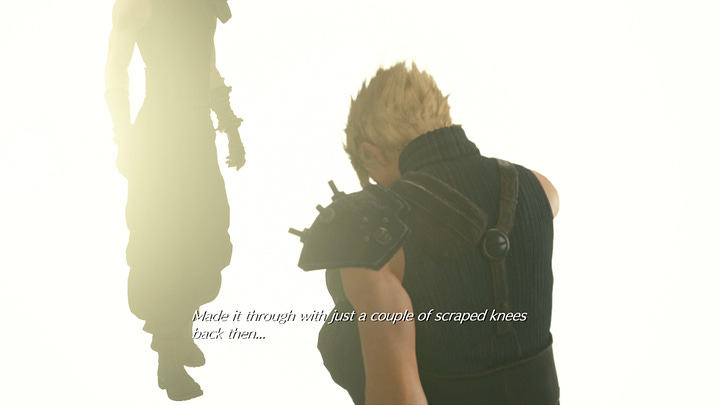

If even the music insinuates that Sephiroth is not actually here and his will has taken over Cloud’s body instead, we can safely say that we’re on the right track.
Now the following question arises: how can Cloud turn into Sephiroth? Not at all, because that’s not quite what’s happening here. Let me explain. Before the black and purple vortex is shown, Cloud suffers from a memory glitch. He’s about to drown but the Jenova cells within him as well as Sephiroth’s will don’t want him to die here. As a result, both Sephiroth’s will for survival and Jenova’s urge for the Reunion take over to save Cloud by temporarily “becoming” Sephiroth in spirit and kill the beast.
However, Cloud believes Sephiroth to appear here instead and do the deed. Like an out-of-body experience. When we see Sephiroth fading into the light, we are probably looking at what Cloud does; ascending to the surface. But that’s not what he perceives. While his body ascends into the light above, his consciousness descends into the darkness below.
On the surface, his team mates didn’t see any of that. They only witnessed Cloud being taken underwater by the snake and around a minute later, they see the same giant snake being tossed out of the water, high into the air, and onto the tree. Then they saw Cloud emerge by himself, sword in hand, walk a few steps on land, drop his sword, and fall unconscious. Thinking that one of them—probably Tifa—dove in and brought him to safety, and somehow his sword fell off his back, feels not quite right, especially since nobody besides Aerith says a word for the rest of the scene. Something clearly shook them and it certainly wasn’t solely the death of the former king of the swamp. Seeing Cloud emerge from the water, sword in hand, not paying attention to anybody, then falling to the ground unconscious would certainly warrant such distant behavior.
In addition to that, Aerith’s worry about Cloud’s perception over his physical well-being suddenly becomes warranted. And when Aerith and Tifa see him come to and remember Aerith’s name, both of the girls look relieved and happy in the moment. They have their Cloud back. However, as soon as he mentions Sephiroth, their mood drops solemn instantly. And as mentioned earlier, Barret and Red XIII are not shown at all. Maybe because neither is really connected to Sephiroth compared to Aerith and Tifa. Or maybe their reactions would have given away the truth of this scene. Who knows.
In any case, this final point is another giveaway that things aren’t as they seem. When Cloud sees the impaled Midgardsormr, he mentions Sephiroth’s strength. While doing so, only the lower half of his face is shown. He’s clearly hiding some inner emotional distress or turmoil, or at least the truth, just as Aerith did in chapter 8 in Remake22 when Cloud mentions that he feels Sephiroth is still around somehow. Though contrary to Aerith, he’s not consciously aware of the truth.

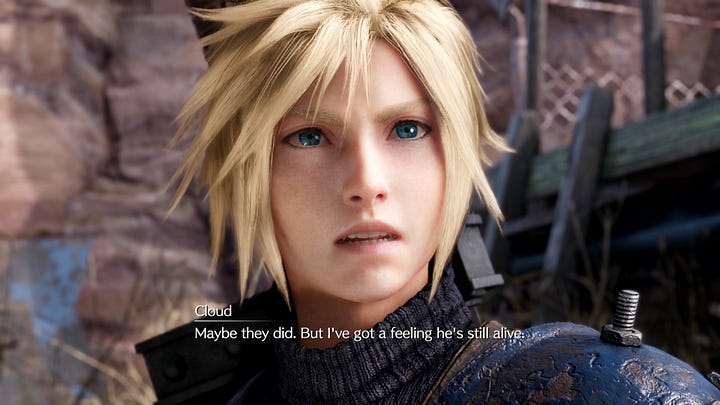

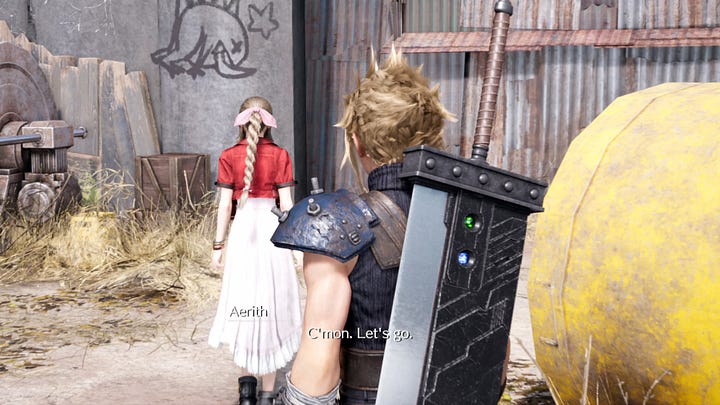
Furthermore, the lack of any reaction from anybody to this statement also speaks volumes. They don’t want to pretend or lie, but also not make things worse for Cloud by confronting him. They also know about his issues to some extent and it’s possible that they decided to remain reserved regarding Cloud’s hallucinations. For example, when they arrive in Nibelheim in chapter 11, Red XIII has to interrupt Barret who was about to say that he almost thought that Cloud “might’ve lost it again“ but then changes it to Cloud “got us lost.“

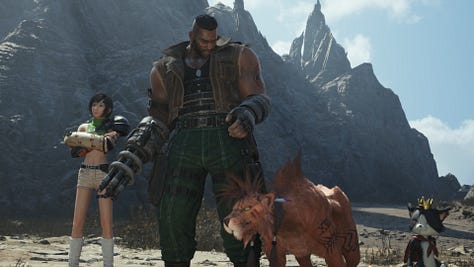
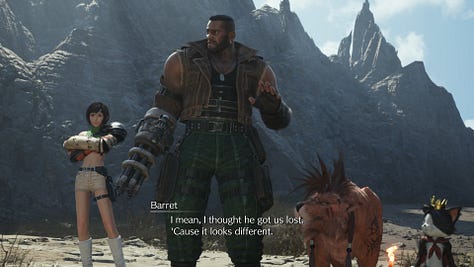
And all of this combined is why I think Cloud emerged from the swamp on his own with his sword in hand before collapsing to the ground. No Sephiroth anywhere besides in Cloud’s head.
To summarize: As a survival mechanism, Cloud visually “becomes” Sephiroth after a green memory glitch and Cloud’s face being covered in black miasma. In Sephiroth mode, Cloud slices the beast and torpedoes it out of the water and onto the tree. He then loses consciousness, instincts take over, and he emerges from the depths, ignoring everything around him. Finally, he collapses on the ground only to be woken up by Aerith. Cloud being visually completely absent during “Sephiroth’s” confrontation with the Midgardsormr, chromatic aberration being used in shots involving Sephiroth, and both Cloud and the rest of the party acting distant and a quite strange afterward reinforce the notion of Cloud having killed the snake instead of Sephiroth this time.
But that’s just a theory. I could be wrong about this, though I’m fairly certain that I’m onto something here because Sephiroth actually being there would break convention and does not explain many of the curious elements we just went through.
The Purpose of this Deviation
This is a nice theory and all, but wouldn’t that be a huge deviation from the original game? Yes and no. On the surface, we merely see Sephiroth doing what happened off-screen in the original game. Very similar to how we see him kill president Shinra in Remake while that also happened off-screen in the original. Cloud killing the snake changes things a bit, though you could say that Sephiroth did it nonetheless, albeit through Cloud instead of Jenova’s body or a black-robed vessel.
But how can Cloud suddenly turn into such a powerhouse? Well, the same as black-robed figures become suddenly strong and gain super-human abilities when they appear as Sephiroth to others. See Cloud’s clash with one in front of Jenova’s tank in The Drum in Remake and the same one slicing through countless tubes and Jenova’s tank afterwards, for example. Or how number 2 can suddenly levitate when appearing as Sephiroth while carrying Jenova on his arms.
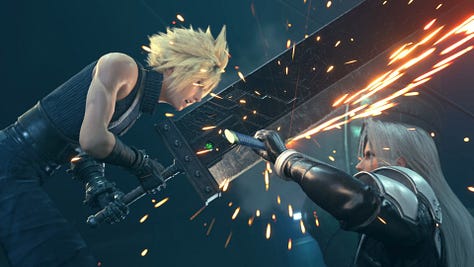
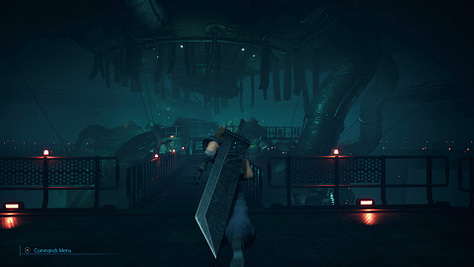
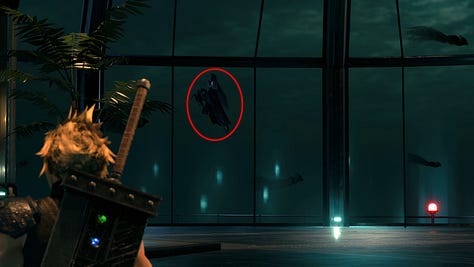
Cloud also becomes ruthless and strong in Gongaga’s destroyed reactor where he gives in to Sephiroth’s will,23 gleefully dodges bullets, and slaughters the Shinra troopers around him. Another instance happens in the Temple of the Ancients when he finishes off the Demon Wall and then breaks through at least half a meter (or around 2 feet) thick marble wall with just his buster sword.24 In both examples, Cloud is taken over by Sephiroth‘s influence but does not “become” him.
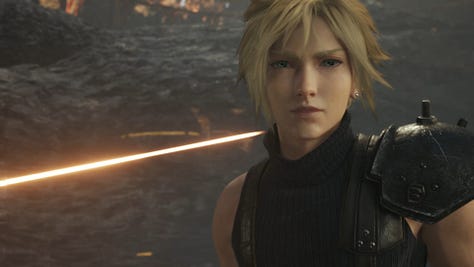
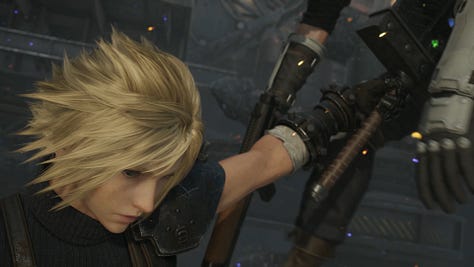
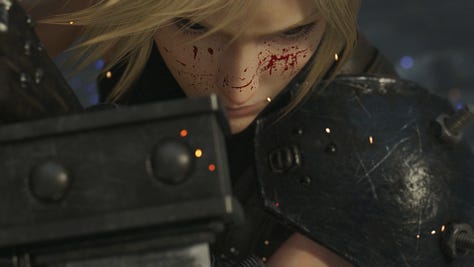
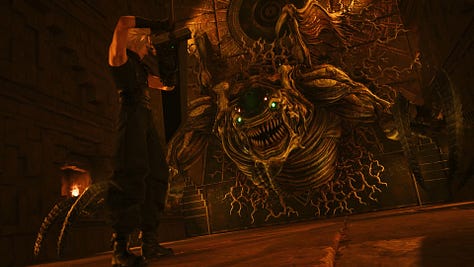

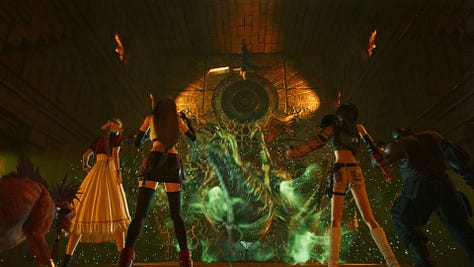
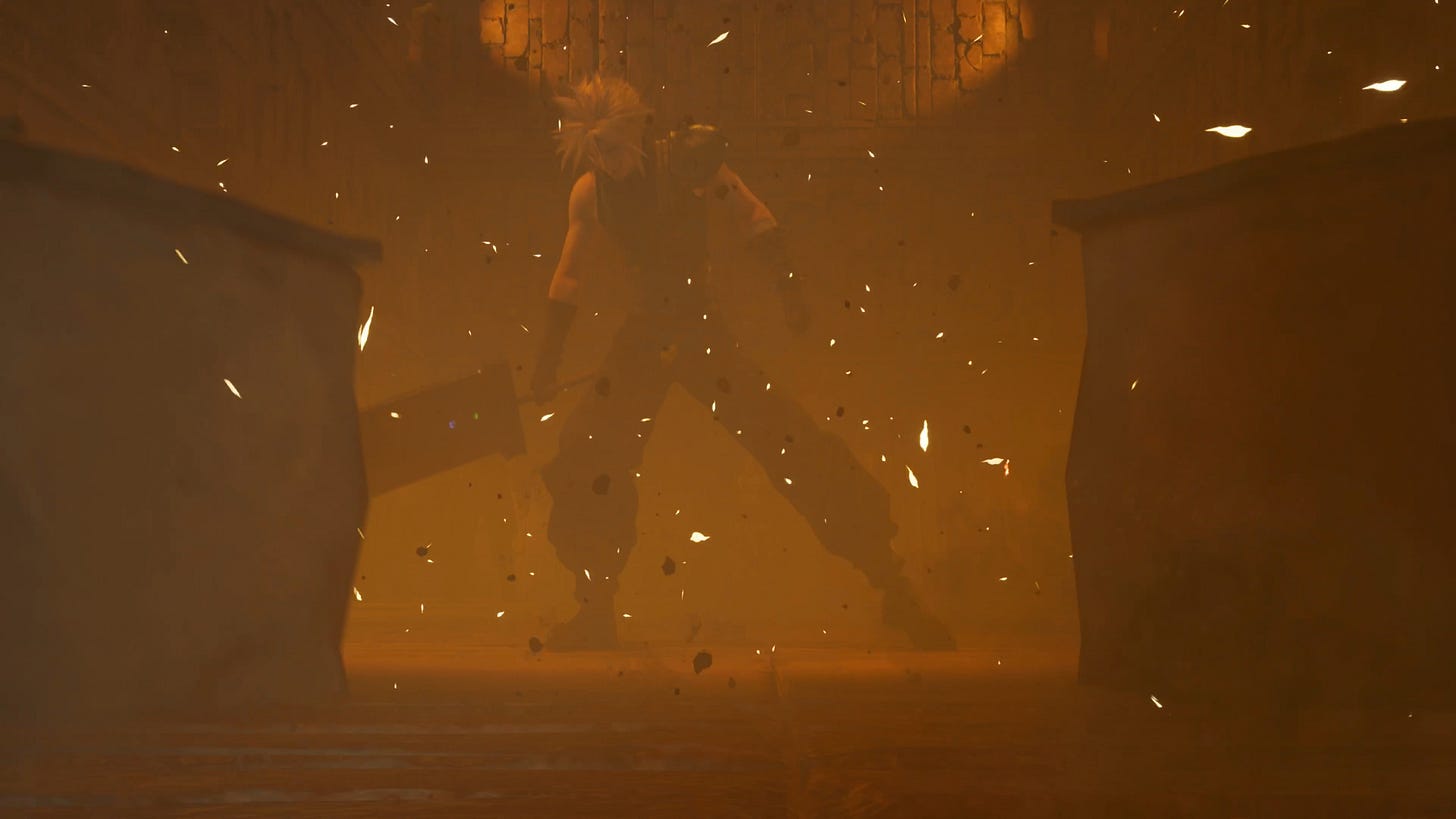
Plus, slicing a weakened Midgardsormr isn’t that impressive. And using an Aeroga spell born from memories which could have been transferred by Sephiroth’s will to Cloud wouldn’t even require a mastered Wind Materia either.
Be that as it may, it’s a deviation nonetheless and each deviation from the original story requires an explicit purpose. Otherwise, why even bother? Especially when making an effort to hide the true meaning of a scene beneath its surface—pun intended. So, what is it in this case?
Final Fantasy VII Rebirth is, among other things, Cloud’s journey into madness. A journey to becoming Sephiroth’s puppet. A puppet that’s destined to deliver the Black Materia to his master. However, chapter 2 is still in the early legs of this journey and not everything has been revealed yet. That Cloud can be so easily manipulated by Sephiroth and become a total savage is first shown in the Gongaga reactor in chapter 9, and later several times in the Temple of the Ancients. But for that to happen, Sephiroth has to prime Cloud over the course of his journey for wanting that Black Materia so bad, that he’d do anything. And as mentioned earlier in this analysis, Sephiroth can’t have Cloud die on him yet, so we’re most likely dealing with self-defense for survival here.
But why not explicitly show Cloud doing it? Because that would deviate too much from the original game where it’s clear that Sephiroth killed the snake, albeit off-screen, so the developers had to repackage this scene while at the same time create intrigue and encourage discussion. Hence the existence of this article in the first place. Furthermore, a few mysteries still need to remain unsolved for the third installment, especially for the revelation of the truth during the Lifestream sequence where Tifa helps Cloud rebuild his true self. I personally would love that scene to reveal many more truths from Remake and Rebirth on top of Cloud’s childhood. To reveal what really happened during certain scenes—like this one and especially Aerith’s death and burial in chapter 14, which we’ll get to in a future article—would be a beautiful expansion of that pivotal stage in Cloud’s journey.
I also think that this Midgardsormr scene exists in this form to sow more doubt and tension within the group. Though potentially also for Cloud’s friends to realize how hard the “life” of black-robed individuals must be and to see Cloud potentially becoming one, too.
I think this scene here is one of many that teach the others how not so different Cloud and the black robes are and that both are victims of Sephiroth’s schemes. This could be the main factor why Tifa and Barret, who have known Cloud the longest, want to go after those black robes who fall into the depths of the Mythril Mine early on while Cloud remains indifferent, claiming that “there’s nothing we can do.”
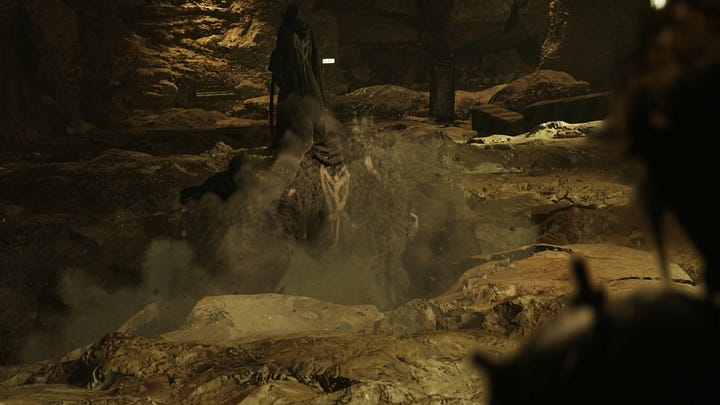

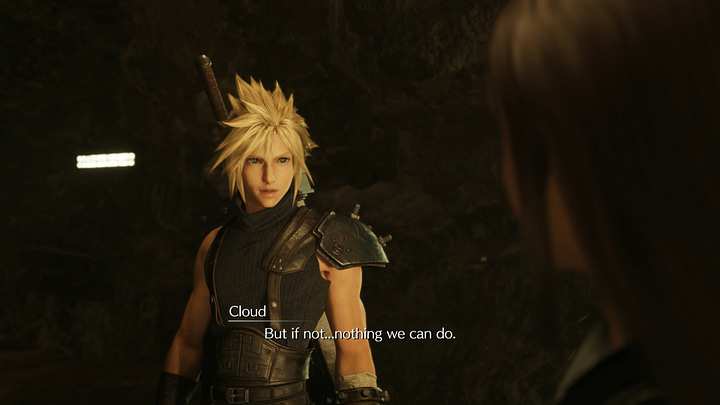

And later, at the start of Barret’s and Red XIII’s gameplay segment, they talk about how those black robes are following Sephiroth, “or so Cloud thinks.“ Barret then raises concerns about whether Cloud can keep it together. Having seen Cloud mistake a black-robed person for Sephiroth and then claim Sephiroth was there to kill the snake despite nobody else seeing Sephiroth in either instance, Barret surely would think that Cloud’s bonkers, hence Barret’s comment about Cloud having lost it again in front of Nibelheim.
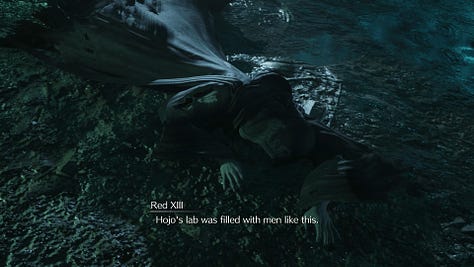
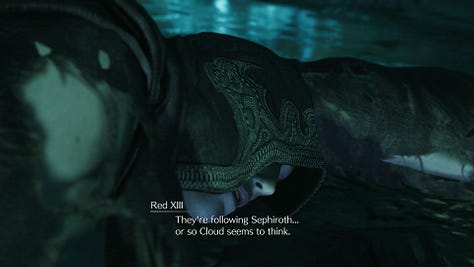
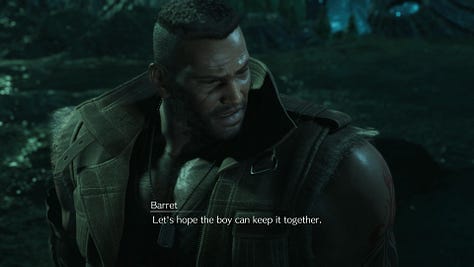
All in all, this Midgardsormr scene is yet another puzzle piece and step in Cloud’s journey towards becoming Sephiroth’s puppet. which is probably the main reason why visiting the abandoned dock at the swamp and later fighting the Midgardsormr was made mandatory while the rest of the Grassland story and chain of events remained largely intact otherwise, as detailed earlier in this analysis.
And that’s it!
Let us know what you think about our interpretation of Midgardsormr’s demise and how it was Cloud who did it, albeit under Sephiroth’s influence, with the main purpose to save Cloud’s life, since he’s a pivotal chess piece in Sephiroth’s grand plan.
Are we on point? Did we miss something? Sound off in the comments here on on our Discord server and share your thoughts and theories if they differ from ours.
I’m not quite sure yet what the next article will cover. There are a few good candidates that I’d like to cover before obvious ones like the White and Black Materia and the worlds. We’ll see.
Until then, thank you very much for reading this rather lengthy analysis article and take care!
— Vyzz
It was originally meant to be a shorter one but then it turned into yet another monster. Incidentally quite fitting for the topic at hand.
Midgardsormr is not the actual name of the world serpent, rather its designation, which translates to “Midgard Serpent,” one which grows so large that it encircles the whole realm of mortals, Midgard. It’s actual name is Jörmungandr.
That hardened protrusion is called “cranial dome” and can be targeted separately in battle. Attacking it will inflict more stagger than attacking the body. If the dome is destroyed, the serpent’s stagger gauge will raise significantly and instantly pressure the creature.
Source: Final Fantasy VII Wiki

Contrary to the original game, you don’t have to catch a Chocobo again after dismounting it. Which makes sense considering you only need a Chocobo to cross the swamp once in 1997 while the Chocobo mount allows you to get around much faster in the huge Grasslands zone that’s chock-full of things to do. Like in any other open-world game.
If you don’t feel like going through the mini-game, you’re free to skip it by choosing “Give Up” in the pause menu. You can always retry at a later point in the game and earn the rewards if you so choose.
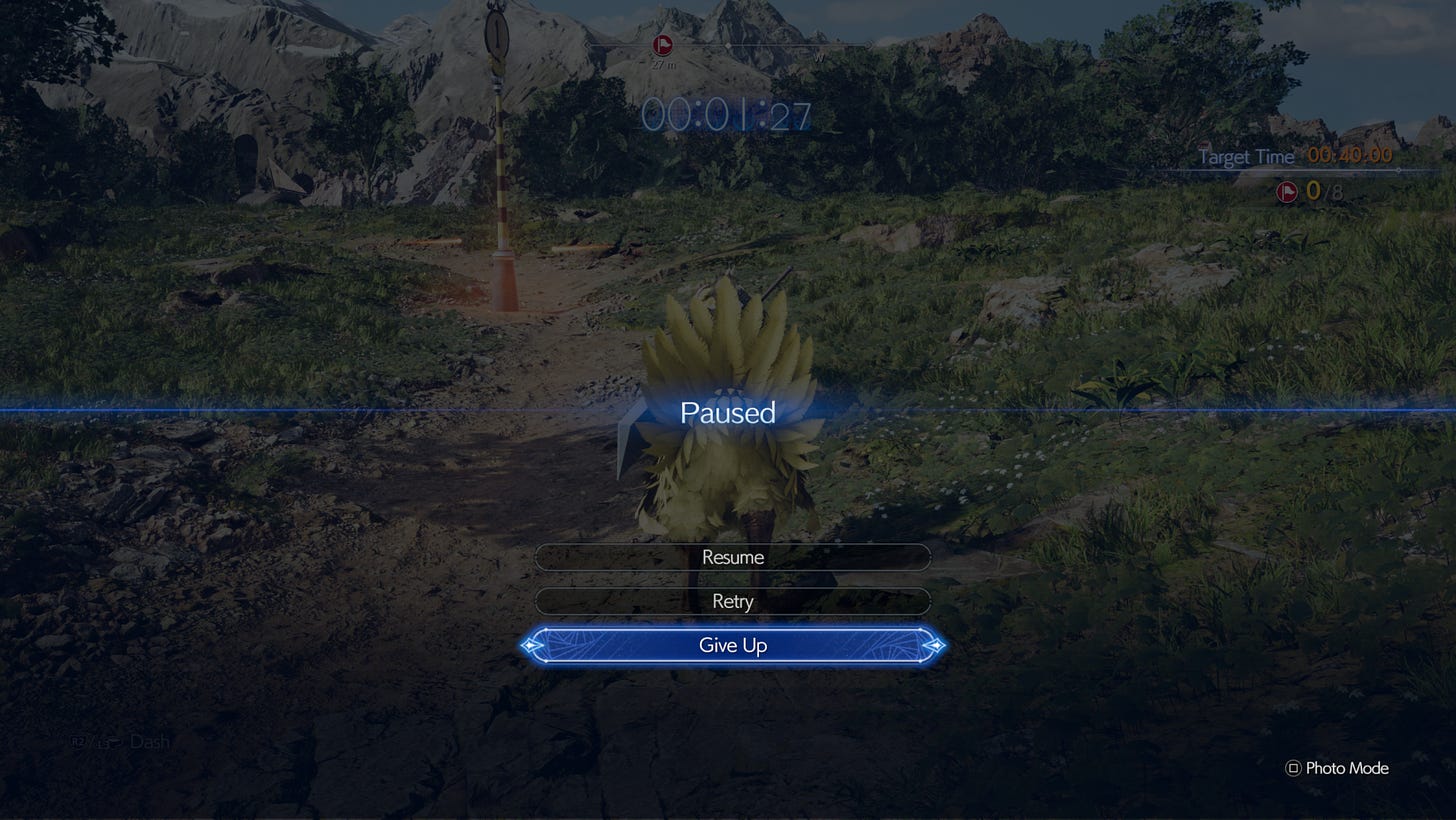
It is revealed within the northern crater’s Whirlwind Maze that Cloud and co. have been following Jenova’s body all along and not Sephiroth, who is still in the process of rebuilding himself encased in blue Materia in the northern crater’s center.
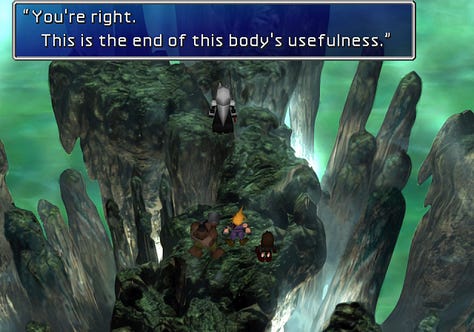
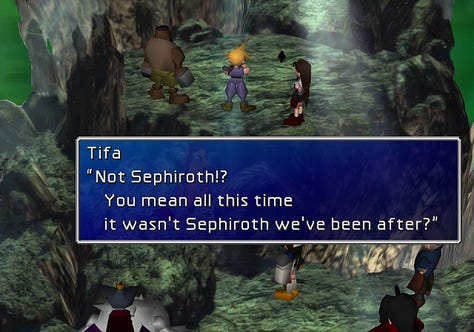

And here we have another difference between the original game and Rebirth. After chapter 2 of the former, the Midgardsormr does not reappear. In the original game, the Midgar Zolom can be fought any time after seeing the one impaled on a tree. And not only once. Which is good because the enemy skill Beta would be missable otherwise. The only actually missable enemy skills are Shadow Flare—learned from Ultima Weapon, Ruby Weapon, Dragon Zombie, and Safer Sephiroth—and Pandora’s Box, also learned from Dragon Zombie, since all of those enemies are unique encounters.
Although in the very first segment of the flashback, we see a level 50 Sephiroth easily dispatching a dragon which in turn easily dispatches a level 1 Cloud. Though I postulate that this green dragon does not compare to the giant snake in the swamp, at least in terms of lore.
Technically the second time since Cloud also saw Sephiroth appear to him in Kalm’s inn at night when the latter began sowing the seeds of doubt in Cloud about Tifa’s existence. After said hallucination, Cloud only sees Broden sitting on a chair downstairs, who is later revealed to be yet another victim of Hojo’s who then turns into another black-robed man later in the story. But more on that in another article.

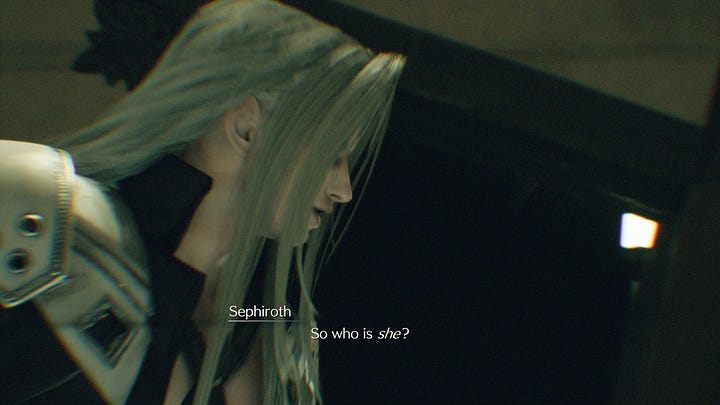
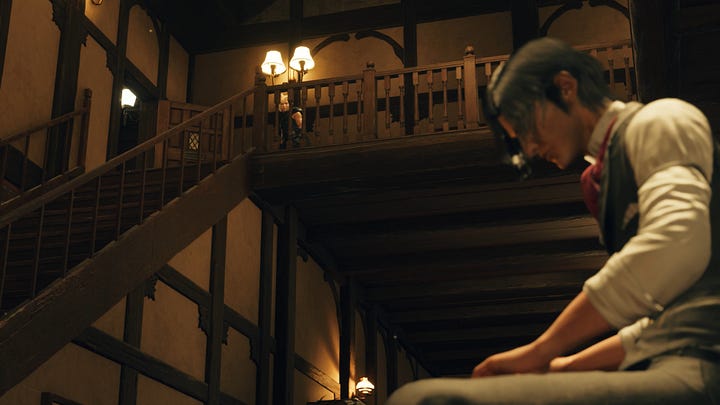
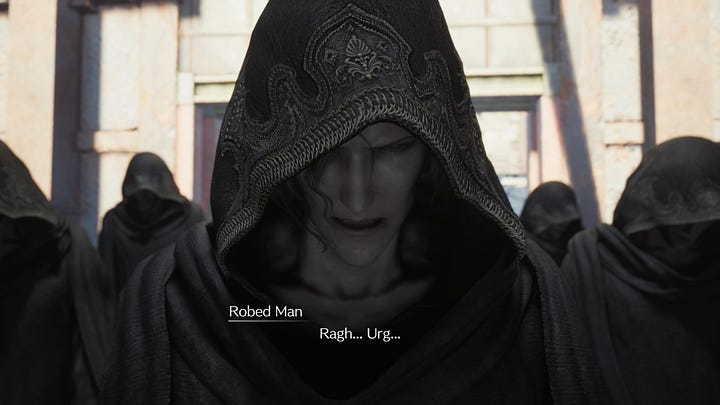
In the original game, Sephiroth, or rather Jenova, calls Cloud a puppet just after defeating Jenova LIFE. In Rebirth, Sephiroth, whose image is overlaid over either another black-robed figure or Jenova’s body itself, calls Cloud a puppet before the battle against Jenova Lifeclinger begins.
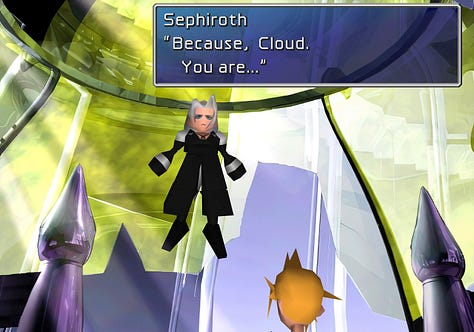
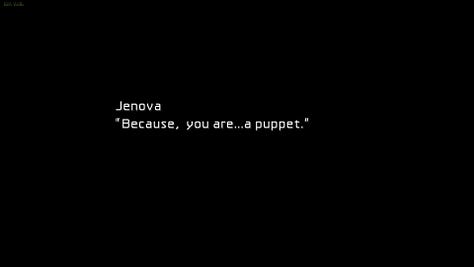

Additionally, in Remake, Sephiroth claims to be Cloud’s “everything”—or rather his “master” in the Japanese version—just before Cloud wakes up in Aerith’s church at the start of chapter 8. Sephiroth also claims that there is still so much to be done, indicating he has grand plans for his puppet.



This is exemplified in Crisis Core where a 2nd Class SOLDIER Zack gets careless during his Fort Tamblin mission in chapter 1 and lets his guard down around the supposedly defeated Anti-SOLDIER monsters Vajradhara Tai which wakes up and smacks him hard, causing Zack to crash into a pillar, almost knocking his lights out. Luckily, Angeal, a true 1st Class SOLDIER comes in clutch and slays the beast before it can finish off Zack. Such a blunder doesn’t happen again after Zack becomes 1st Class. Long story short, not making sure an enemy is dead before letting one’s guard down is the mark of a rookie or a pretender. Not a true 1st Class SOLDIER, which Cloud is not. And this Midgardsormr post-battle scene perfectly exemplifies this fact.
Learn more about Cloud’s memory glitches in our comprehensive Game Analysis #26 about Sephiroth’s Endgame, particularly the Summary section about Cloud.
Since Sephiroth uses only level three elemental spells in the original game’s flashback and has all Materia fully mastered in both the original game and Rebirth, it is safe to assume that he also casts Aeroga—the third level wind spell from Final Fantasy VIII onwards—in this scene. Side note: green wind magic Materia does not exist in the original game.
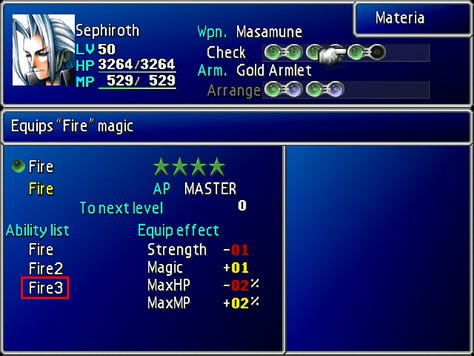
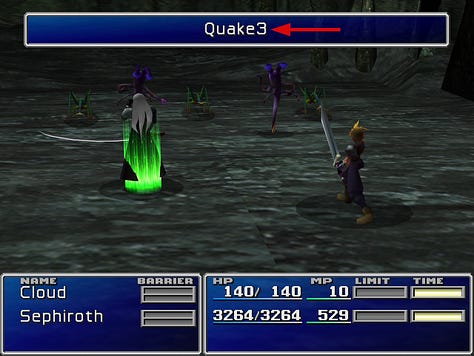
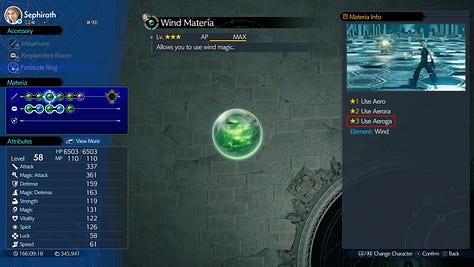
And another death by impalement by Sephiroth. Can’t he ever kill his opponents any other way? And also always in the back. That backstabbing bozo!
It’s possible that this cutscene is also pre-rendered, though it certainly uses in-game assets and was at least created in-engine. Furthermore, the first frame of a new shot in an in-engine cutscene is usually lacking motion blur, which is the case in many instances during this cutscene here. Still, it is sometimes necessary for such scenes or parts of them to be rendered as video files after their completion in-engine if CPU- or GPU-intensive effects and/or loading of too many new assets would slow down the scene or delay transitions. Neither should be an issue here, though to be sure, I’d have to check which scenes are included as video files in the PC version, to which I currently have no access.
The German term for “snake bread on a stick” where a long snake-like kneaded dough is wrapped around—and sometimes pierced by—a stick and then held over a campfire.
Who…Am I? is the 23rd track on disc 3 of Final Fantasy VII’s original sound track.
Unless you count the earlier shot of the three black robes with the whole party in the background. But they are so far in the distance that I’m hard pressed to count this shot as including Barret and Red XIII in a meaningful way.
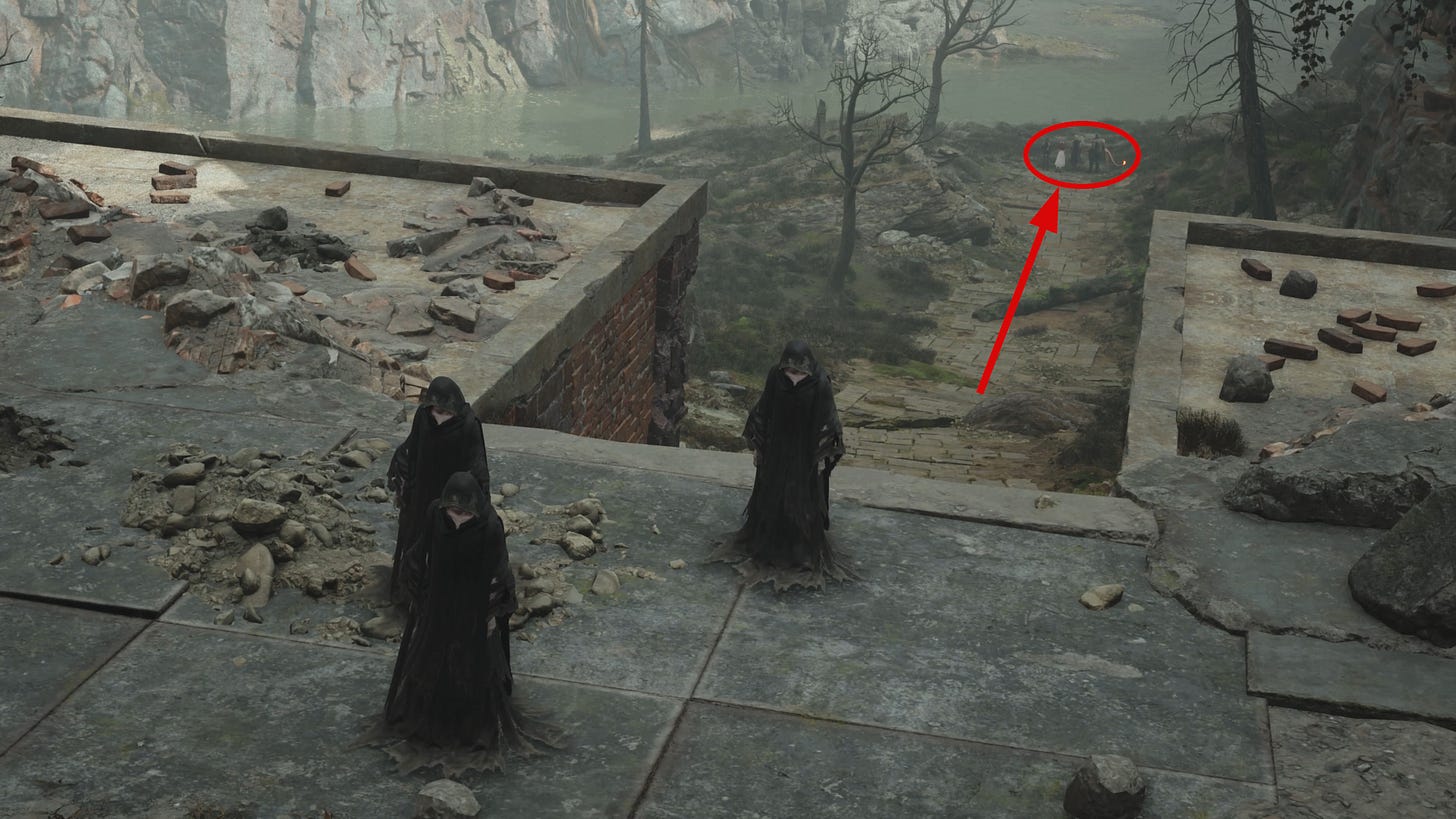
We will cover the black and white Whispers and their respective function in a future article.
Sephiroth say “I am… your everything” in English and “I am… your master“ in Japanese.
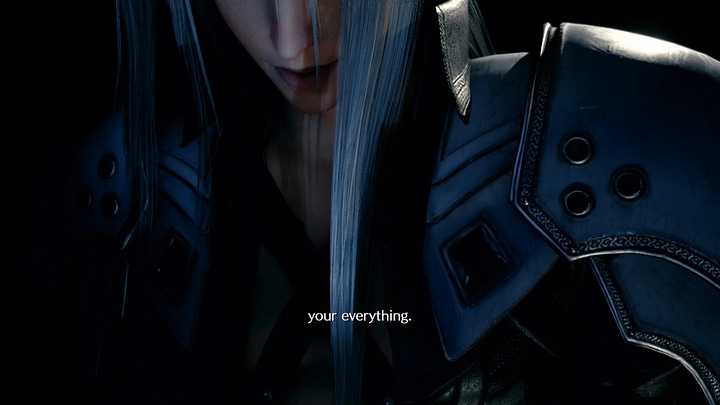

When Sephiroth appears to Cloud through the Whispers before the latter succumbs to the former’s call, the glitched slowdown shot is also treated with a chromatic aberration effect, just like during “Sephiroth’s” confrontation with the Midgardsormr and overall stage time underwater.
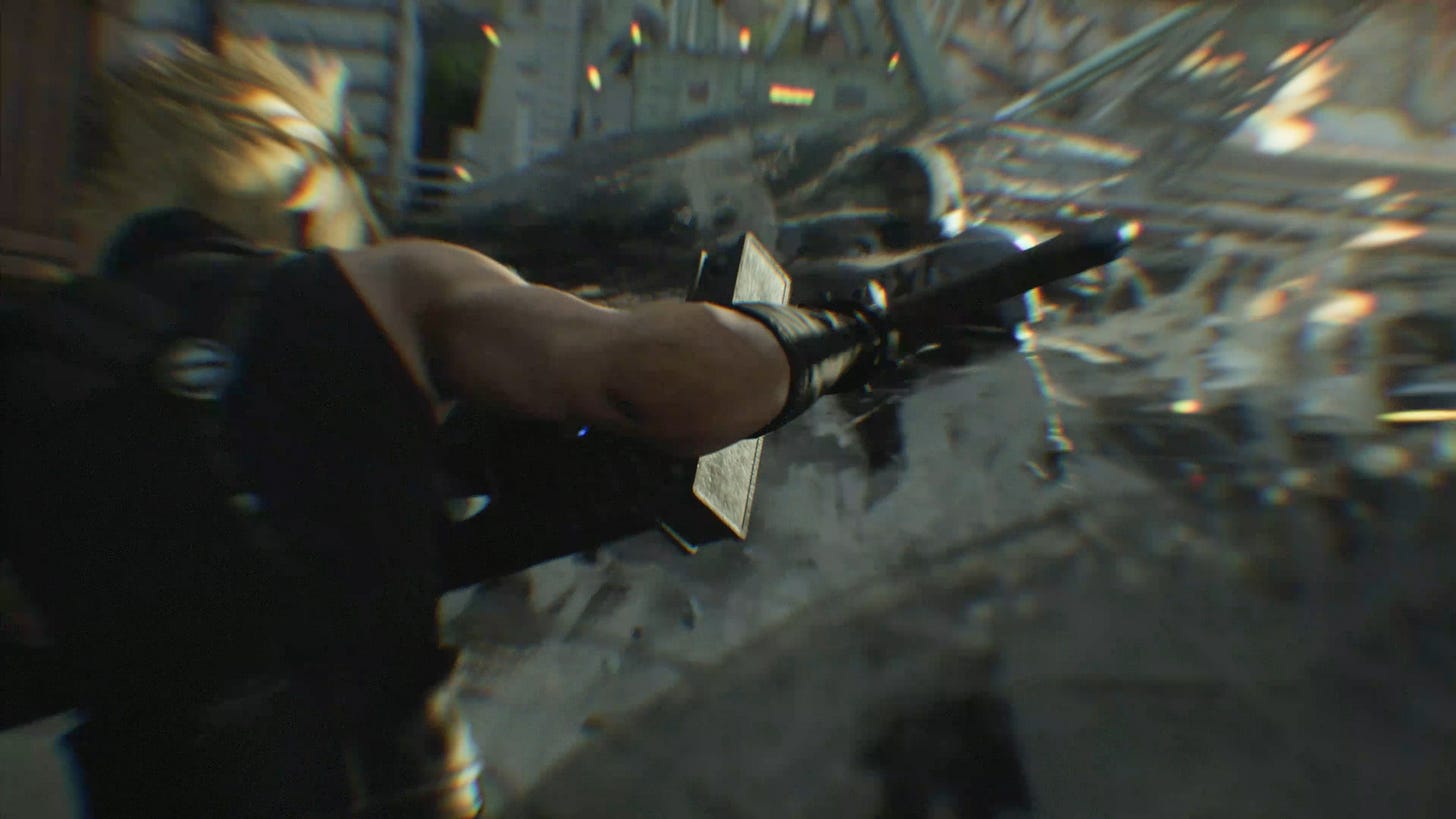
And before that, in the same chapter, Cloud finishes off one of the 2nd Class SOLDIERs (top row) and later a black-robed man during his Trial (bottom row) in a similarly gruesome way.
